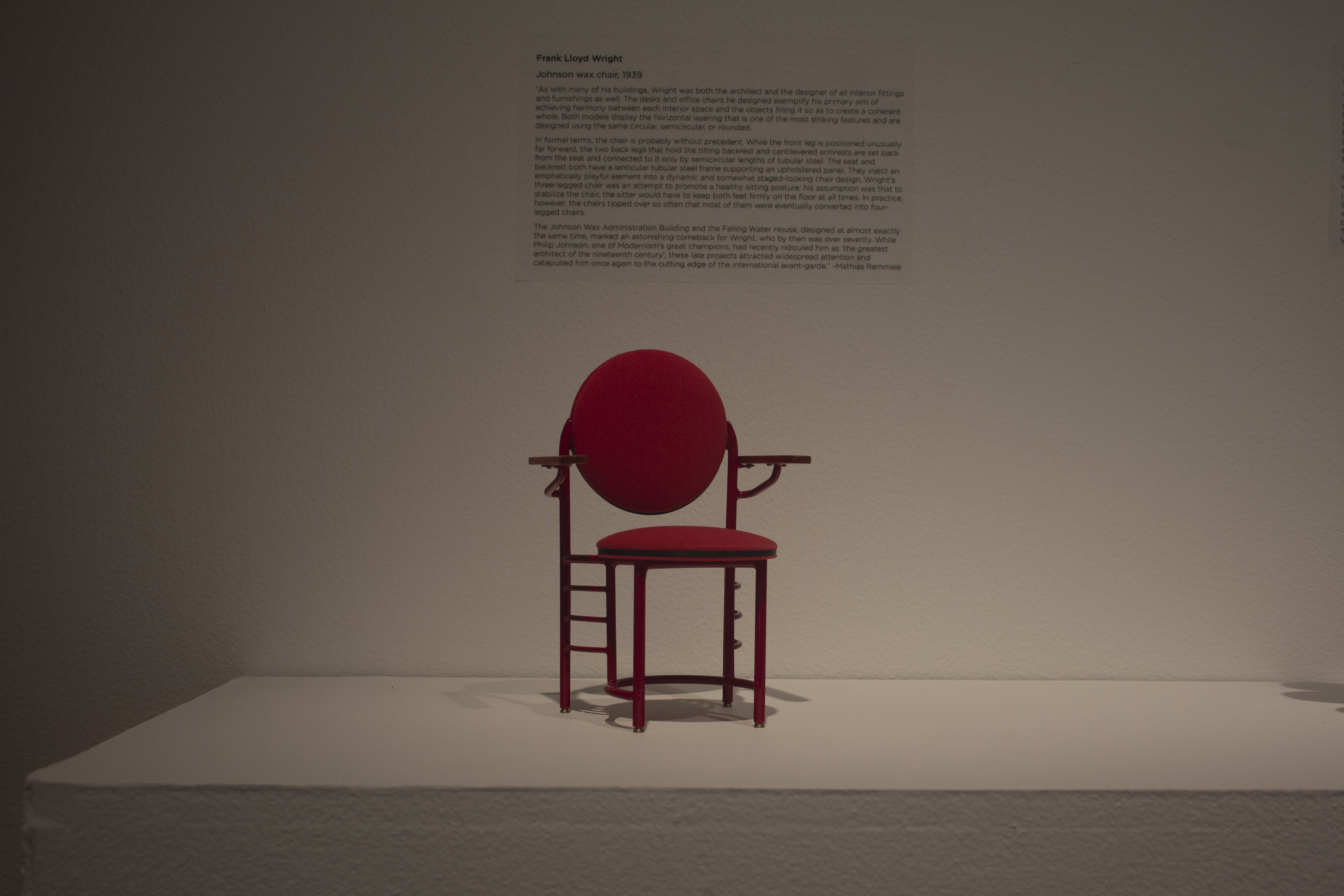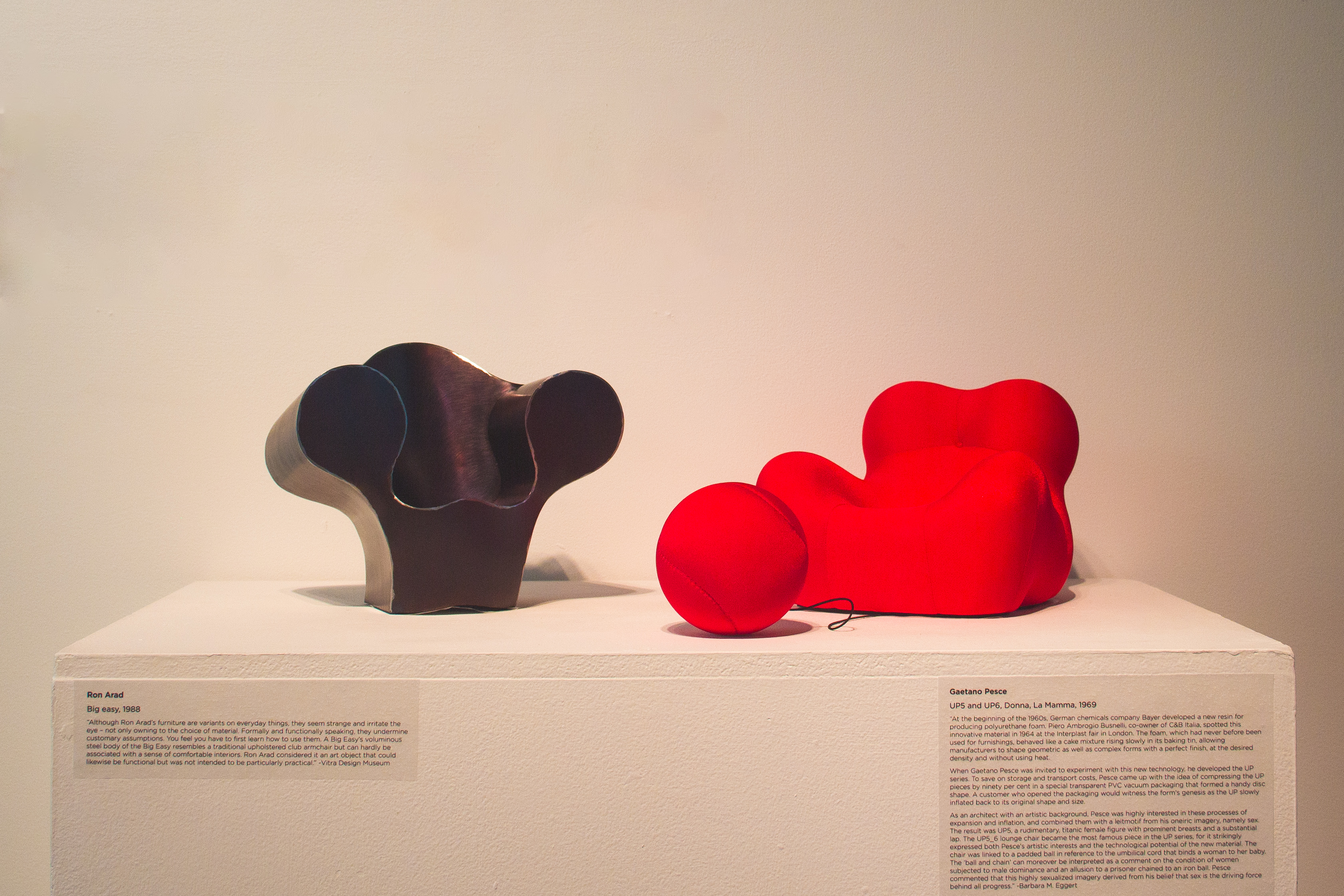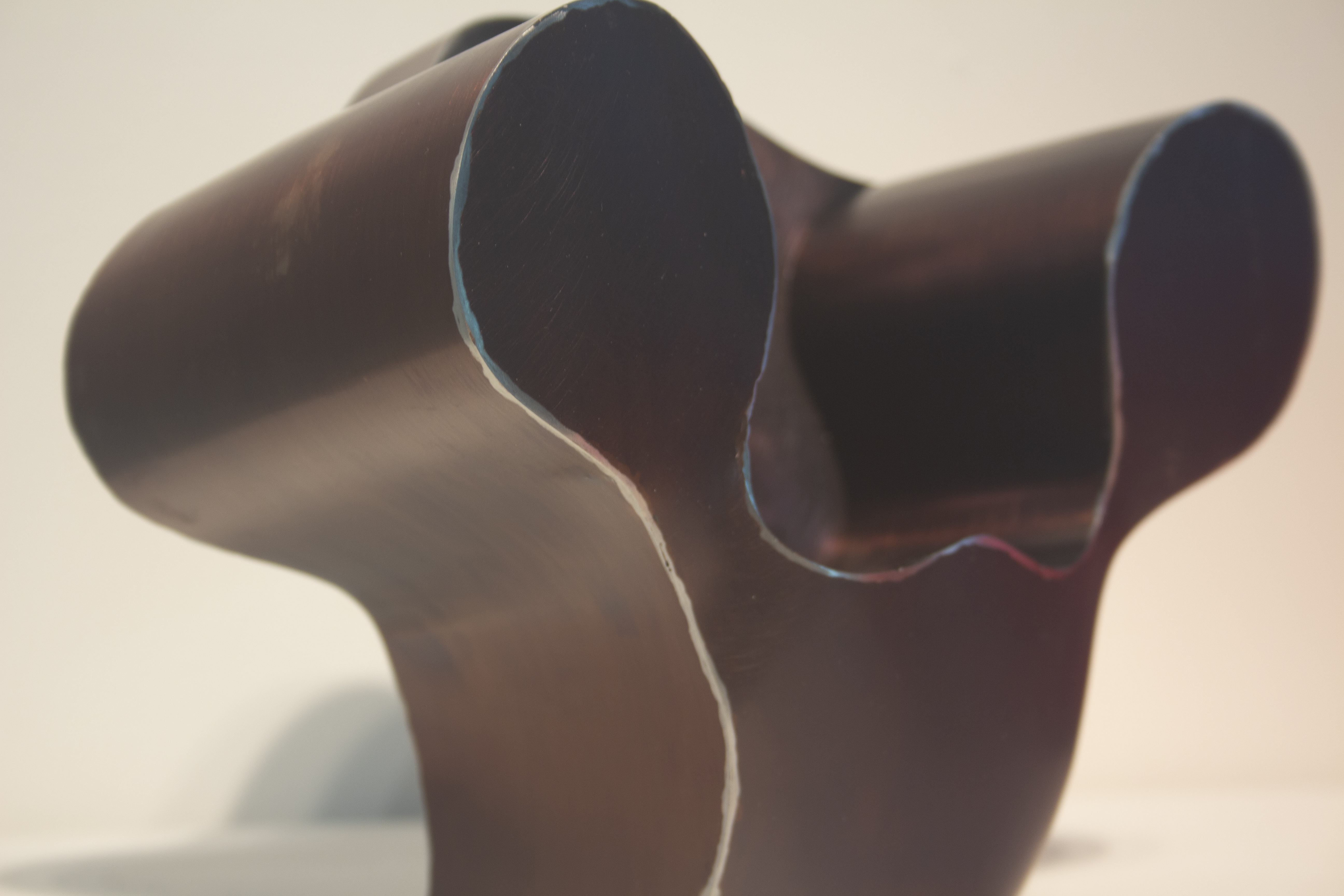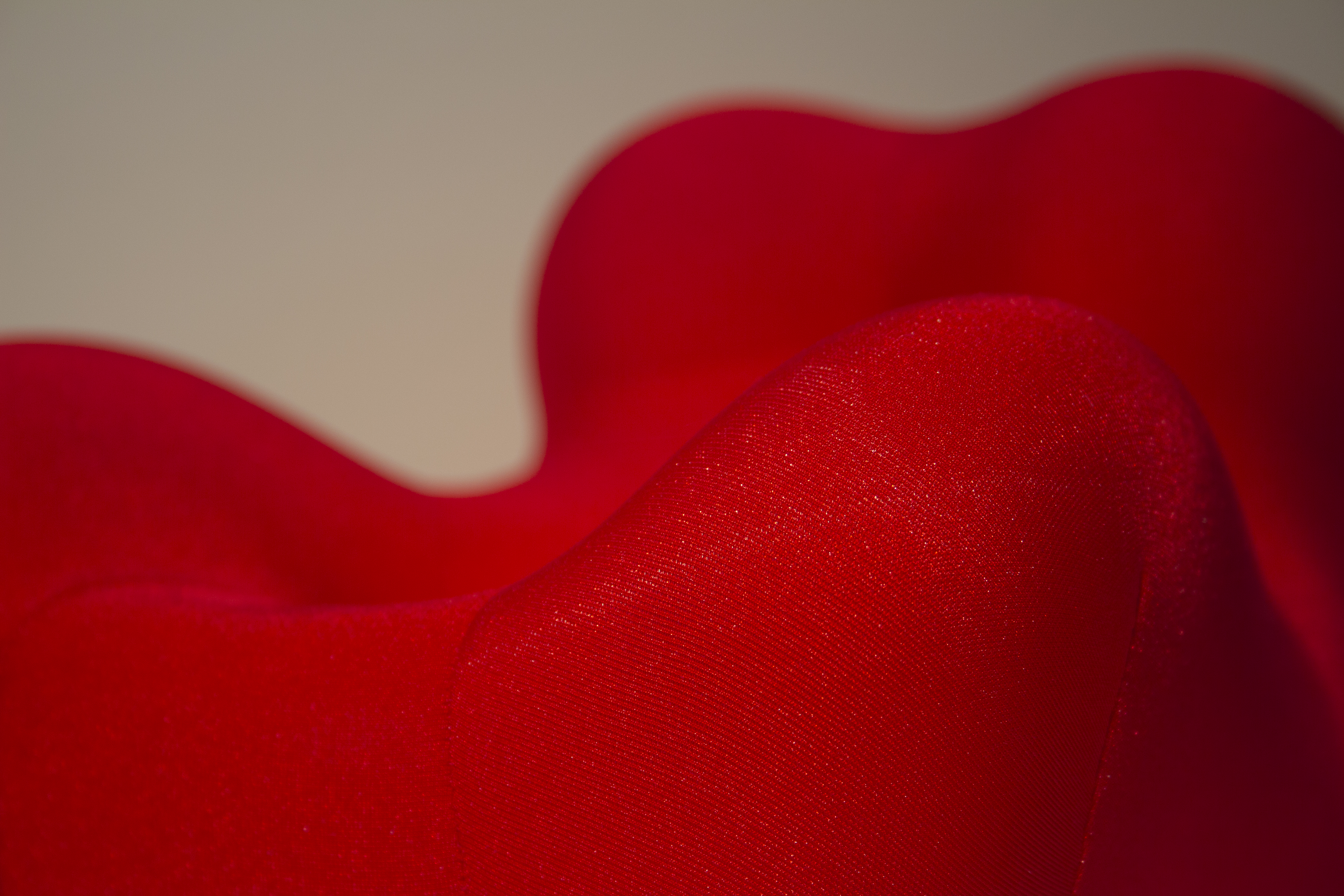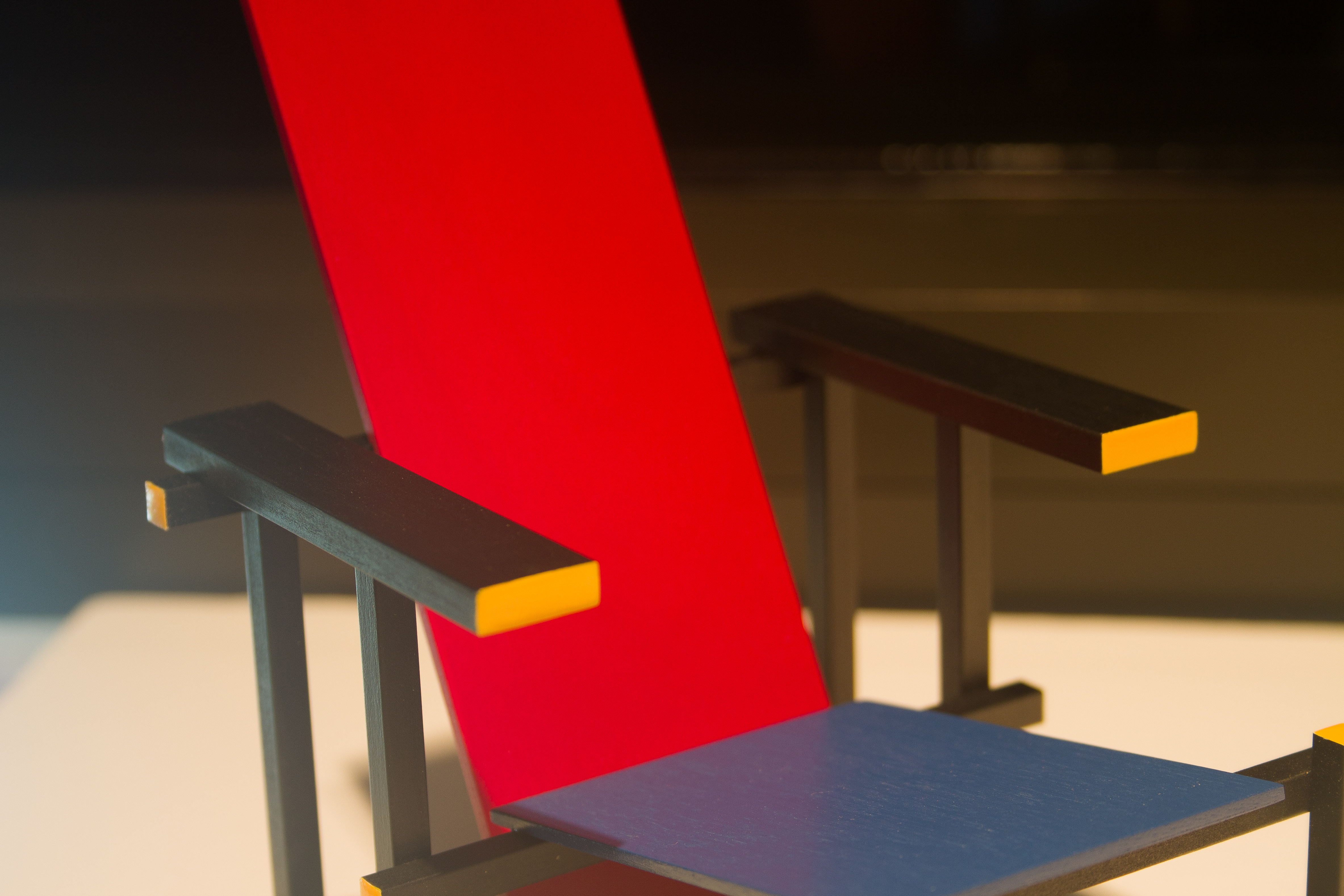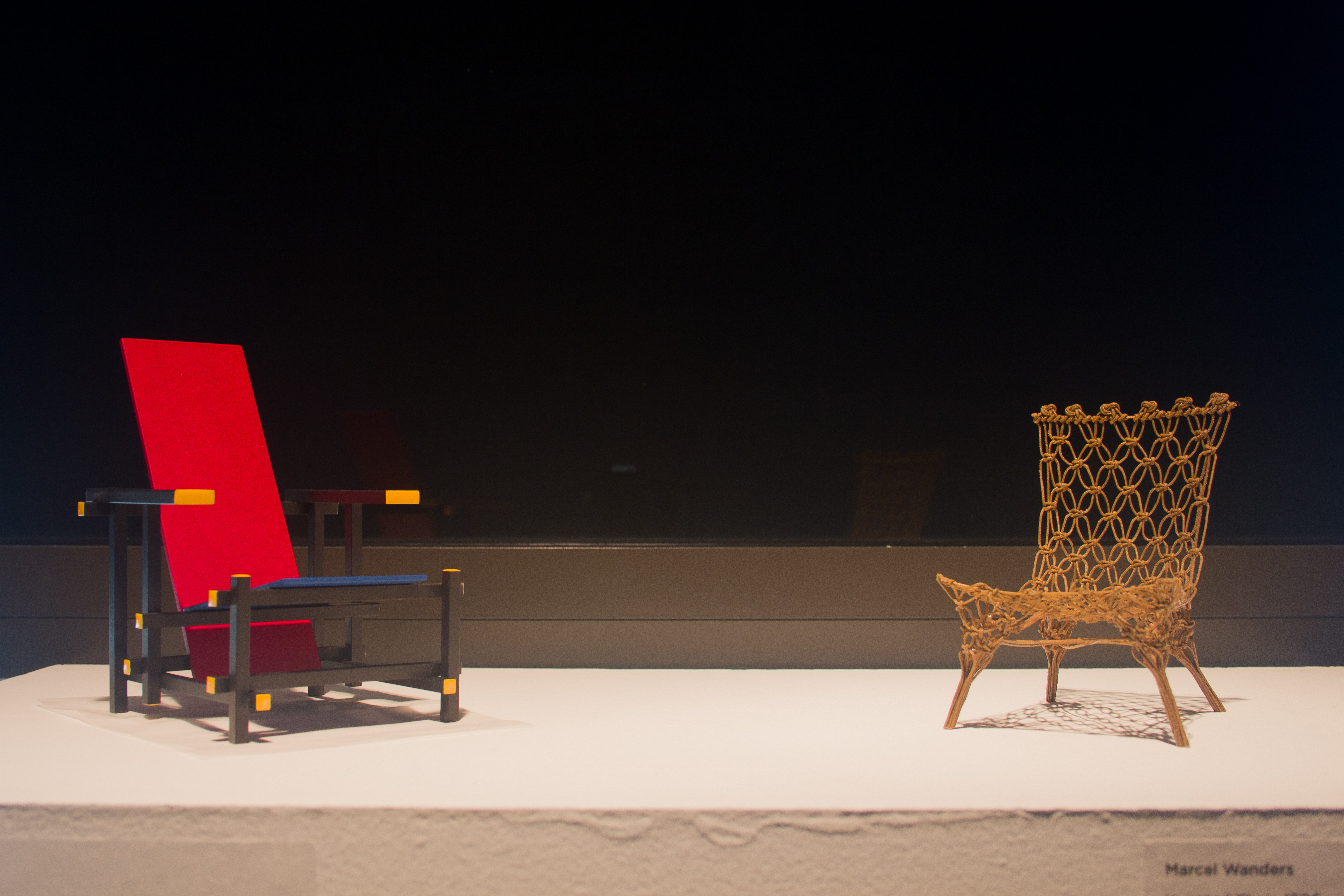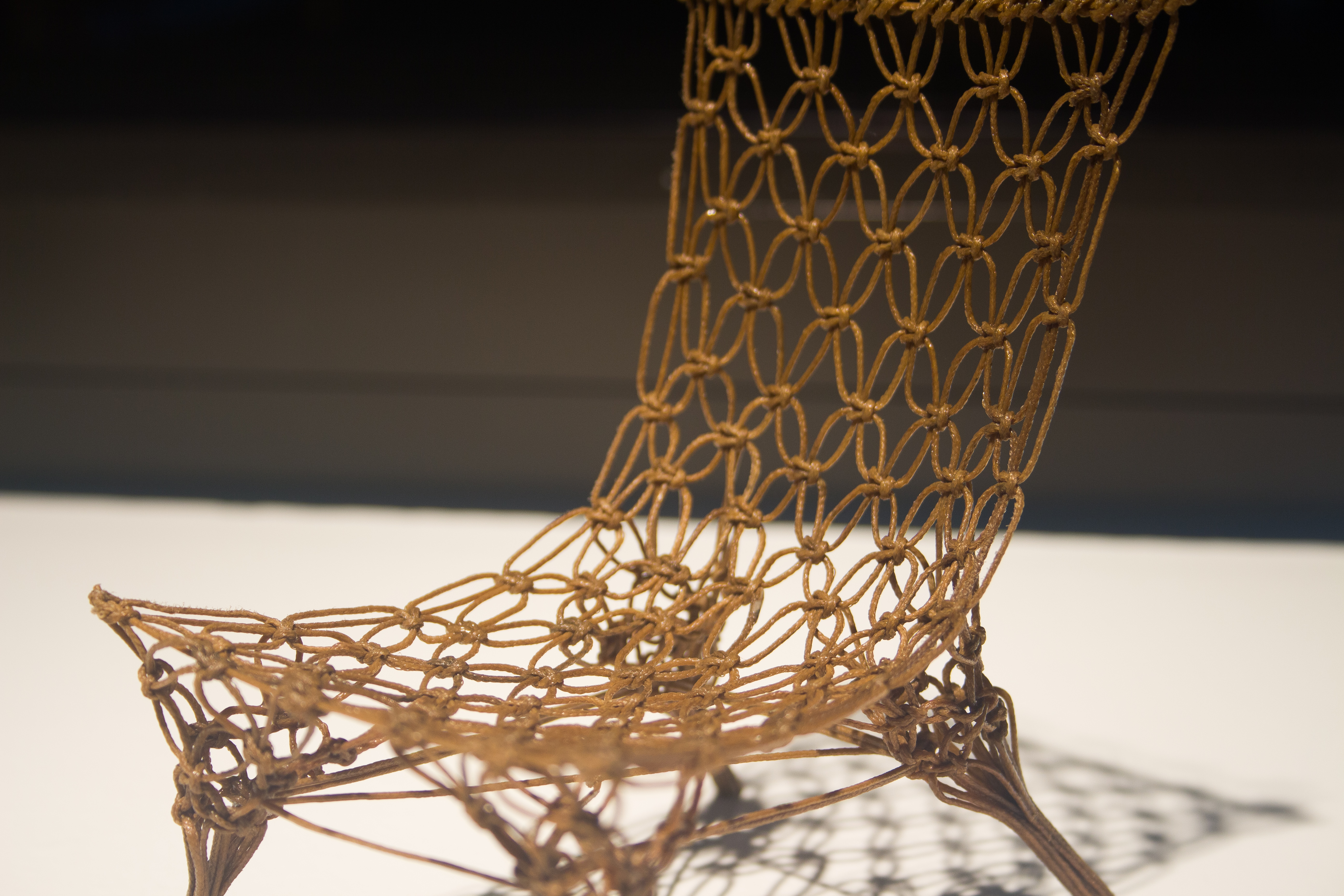Meyers Gallery 2024 Exhibition- Vitra: Mini Milestones
May 30th - July 21st, 2024
For over two decades, the Vitra Design Museum has been making miniature replicas of milestones in furniture design from its collection. The Miniatures Collection encapsulates the entire history of industrial furniture design – moving from Historicism and Art Nouveau to the Bauhaus and New Objectivity, from Radical Design and Postmodernism all the way up to the present day.
Exactly one-sixth the size of the historical originals, the chairs are all true to scale and precisely recreate the smallest details of construction, material, and color. The high standard of authenticity even extends to the natural grain of the wood, the reproduction of screws, and the elaborate handicraft techniques involved. This has made the miniatures into popular collector's items as well as ideal illustrative material for universities, design schools, and architects.
About Vitra :
Vitra—founded by Willi and Erika Fehlbaum, the owner of a shopfitting business—entered the furniture market in 1957 with the licensed production of furniture from the Herman Miller Collection for the European market—primarily designs by Charles and Ray Eames and George Nelson. In 1967, the company introduced the Panton Chair by Verner Panton—the first cantilever chair out of plastic. In 1977, Rolf Fehlbaum took over the management of Vitra. In 1984, the partnership that had been formed with Herman Miller was terminated by mutual consent. Subsequently, Vitra obtained the rights to designs by Charles and Ray Eames and George Nelson for Europe and the Middle East.
The Vitra Campus and the Vitra Design Museum with its exhibitions, design archives and a comprehensive furniture collection inspire visitors and employees alike. The collection of the Vitra Design Museum ranks among the most important holdings of furniture design worldwide. It contains some 7000 pieces of furniture, over 1000 lighting objects, and numerous archives, as well as the estates of such designers as Charles and Ray Eames, Verner Panton, and Alexander Girard.Each year, the DAAPworks event highlights the creative output of the graduating class from the top-ranked College of Design, Architecture, Art, and Planning at the University of Cincinnati.
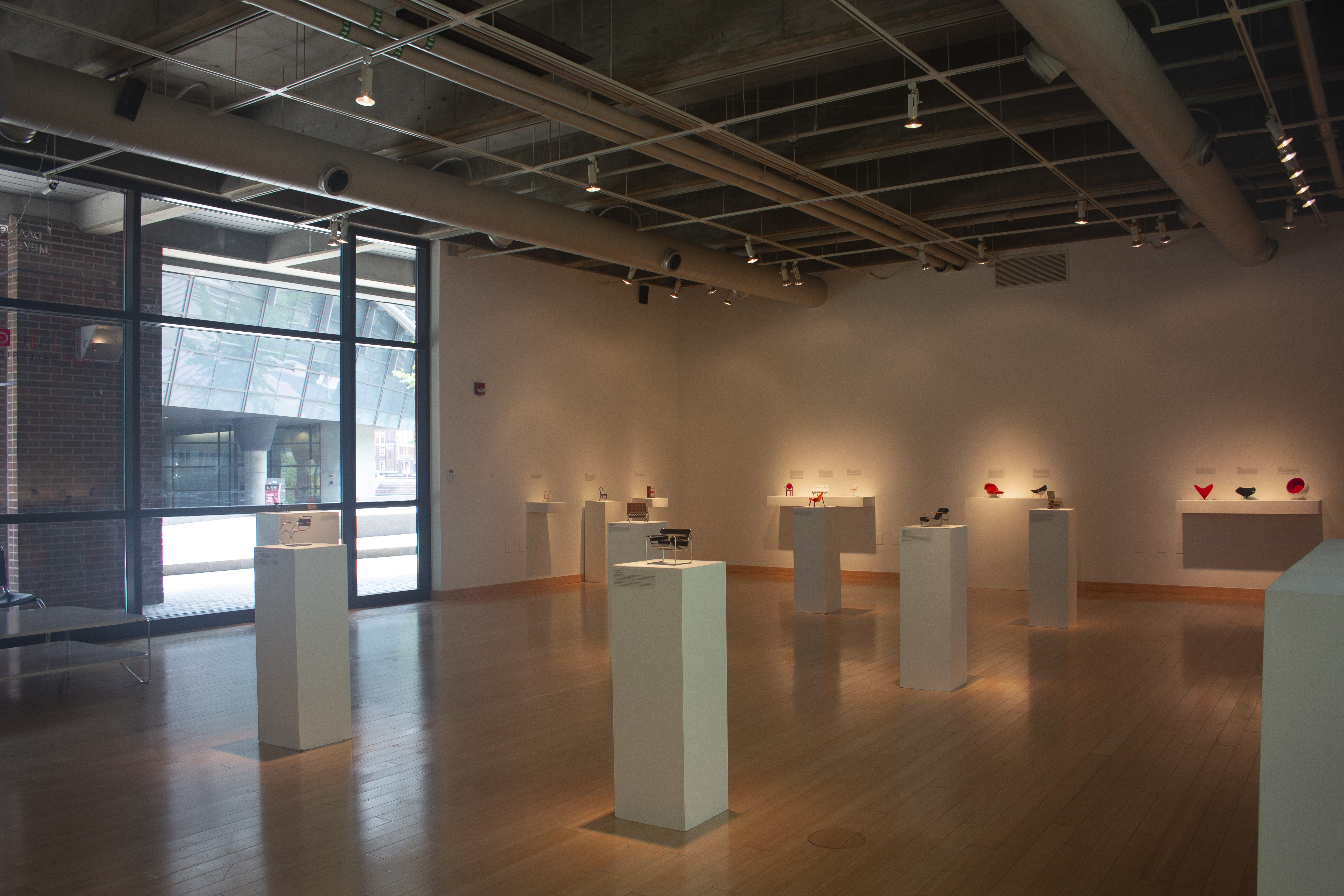
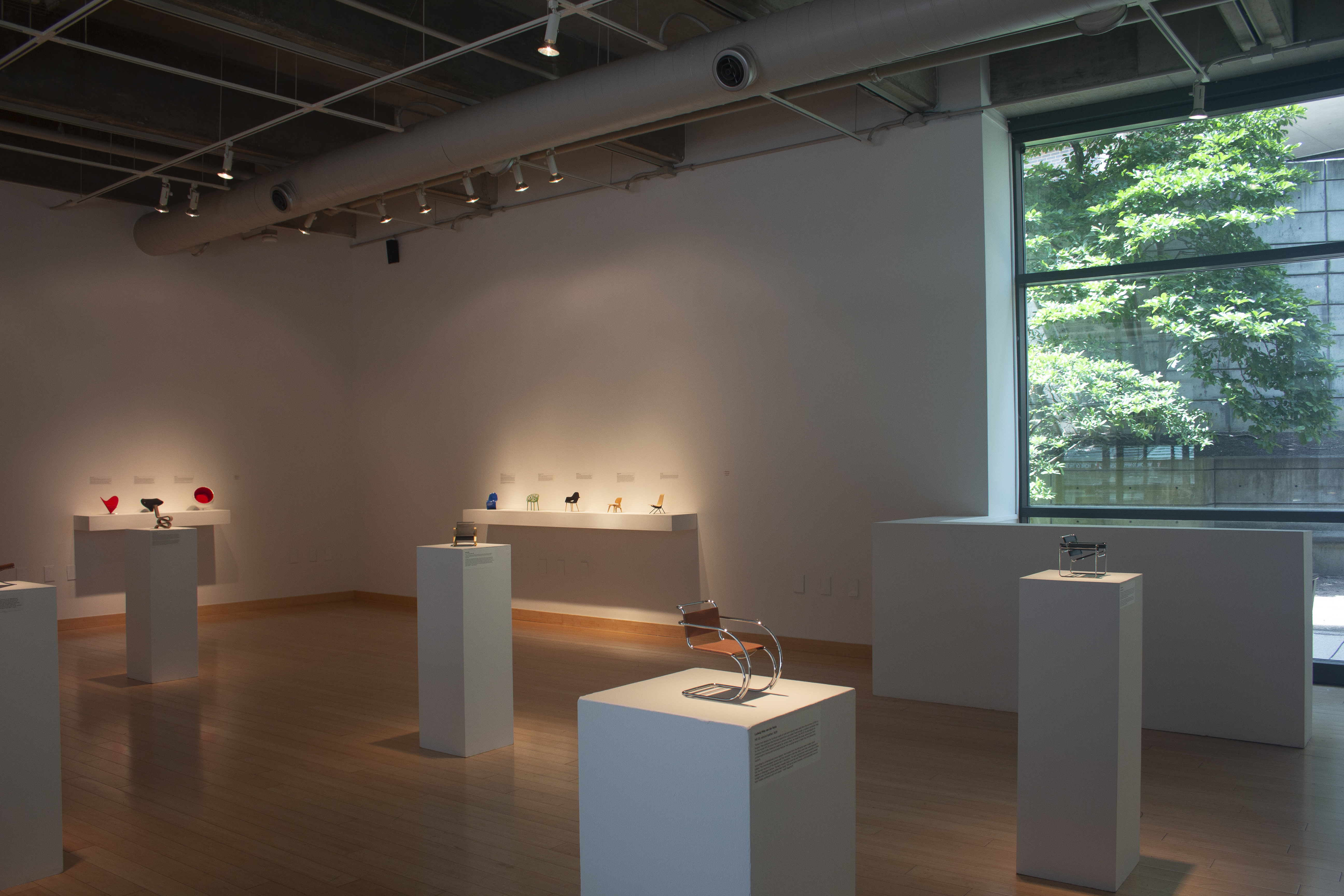
Ron Arad
Big Easy, 1988
“Although Ron Arad’s furniture are variants on everyday things, they seem strange and irritate the eye – not only owning to the choice of material. Formally and functionally speaking, they undermine customary assumptions. You feel you have to first learn how to use them. A Big Easy’s voluminous steel body of the Big Easy resembles a traditional upholstered club armchair but can hardly be associated with a sense of comfortable interiors. Ron Arad considered it an art object that could likewise be functional but was not intended to be particularly practical.” -Vitra Design Museum
Gaetano Pesce
UP5 and UP6, Donna, La Mamma, 1969
“At the beginning of the 1960s, German chemicals company Bayer developed a new resin for producing polyurethane foam. Piero Ambrogio Busnelli, co-owner of C&B Italia, spotted this innovative material in 1964 at the Interplast fair in London. The foam, which had never before been used for furnishings, behaved like a cake mixture rising slowly in its baking tin, allowing manufacturers to shape geometric as well as complex forms with a perfect finish, at the desired density and without using heat.
When Gaetano Pesce was invited to experiment with this new technology, he developed the UP series. To save on storage and transport costs, Pesce came up with the idea of compressing the UP pieces by ninety per cent in a special transparent PVC vacuum packaging that formed a handy disc shape. A customer who opened the packaging would witness the form's genesis as the UP slowly inflated back to its original shape and size.
As an architect with an artistic background, Pesce was highly interested in these processes of expansion and inflation, and combined them with a leitmotif from his oneiric imagery, namely sex. The result was UP5, a rudimentary, titanic female figure with prominent breasts and a substantial lap. The UP5_6 lounge chair became the most famous piece in the UP series, for it strikingly expressed both Pesce's artistic interests and the technological potential of the new material. The chair was linked to a padded ball in reference to the umbilical cord that binds a woman to her baby. The ‘ball and chain' can moreover be interpreted as a comment on the condition of women subjected to male dominance and an allusion to a prisoner chained to an iron ball. Pesce commented that this highly sexualized imagery derived from his belief that sex is the driving force behind all progress.” -Barbara M. Eggert
Verner Panton
Panton Chair (set of 5), 1959-1960
“The Panton Chair was hailed as a feat of production engineering at its launch in 1967. It was the world's first resilient cantilever chair to be made of a single piece of plastic.
The idea of a cantilever chair made of one piece of material had preoccupied Verner Panton since 1956. His entry for a furniture competition dating from that year, an S-shaped design to be made of wood or plastic. As his sketches of the late 1950s show, Panton then took the idea a step further by replacing the baseplate with the concave 'train' that was to become the Panton Chair's hallmark feature. This provided the basis for the non-functional polystyrene model of 1959/60 with which Panton set off in search of a manufacturer — a quest that took him all over Europe. It was not until around 1963, following numerous rejections, that he found success with the Basel entrepreneur Willi Fehlbaum, who as licensee of the Herman Miller Collection had experience of plastics and agreed to give the idea a try.
The idea of a chair made 'of a piece' that is realized so impressively in the Panton Chair was not new and later informed several different products. Other designers prior to Panton had arrived at much the: form, but it was Panton who worked at it doggedly for mc until he at last had a viable product.” -Mathias Remmele
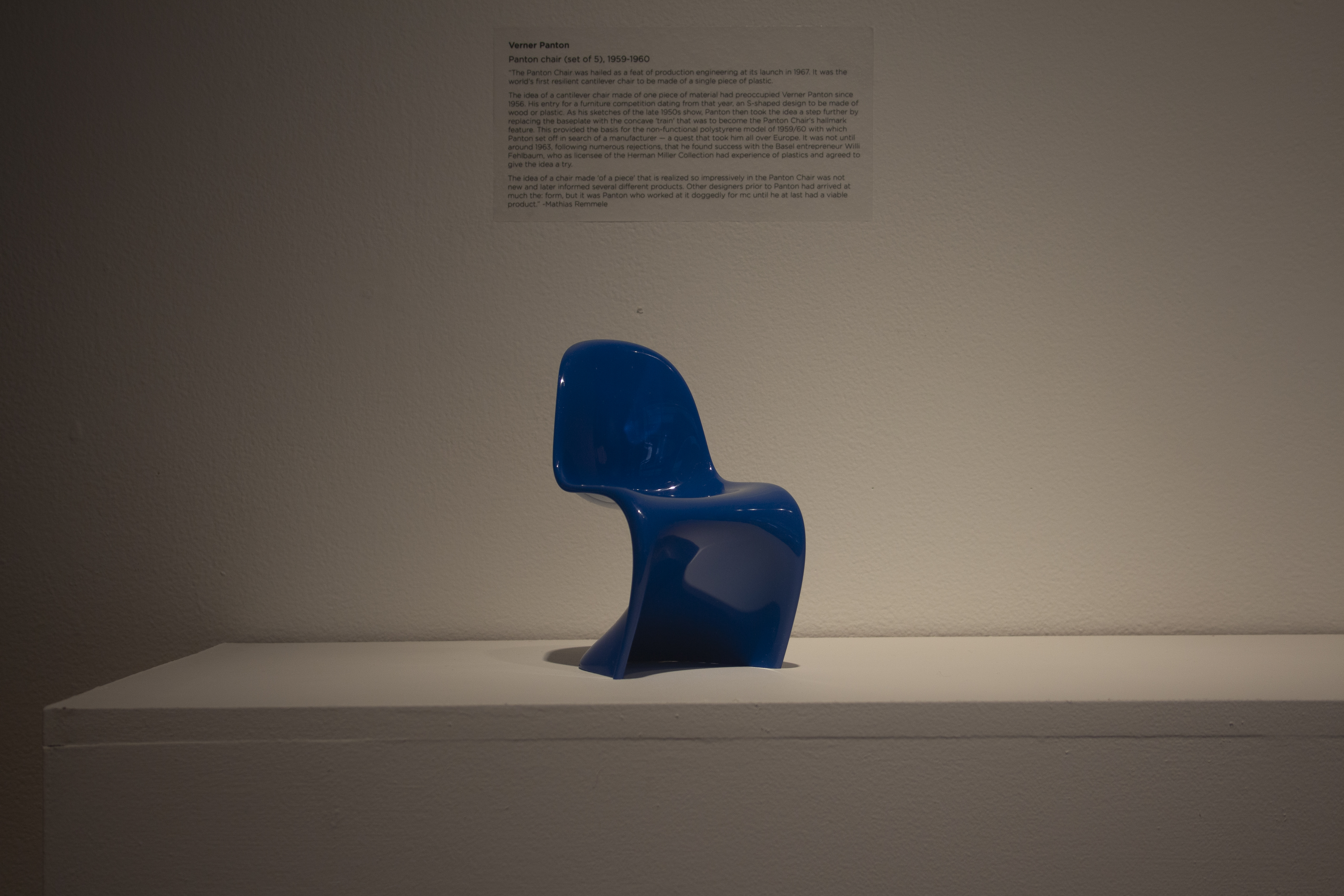

Alvar Aalto
Nr. 41 “Paimio”, 1930-1931
“In 1929, Alvar Aalto won the design competition for the tuberculosis sanatorium in Paimio in southwest Finland. Construction began in April 1930, and in June 1933 the sanatorium was inaugurated.
The design had a long developmental phase. Aalto had worked with the furniture manufacturer Otto Korhonen since 1929.. Aalto had already worked with plywood seat shells, but previously he had mounted them on frames of tubular steel or flat steel. For the undulating framework of the Paimio Chair, several thin veneer layers were glued together and pressed into shape. One could then cut three or four chair frames, like slices, from one broad piece. Aalto arranged the veneered sections lengthwise in such a way that each one finished at a different point, making the frame appear seamless.” - Jochen Eisenbrand
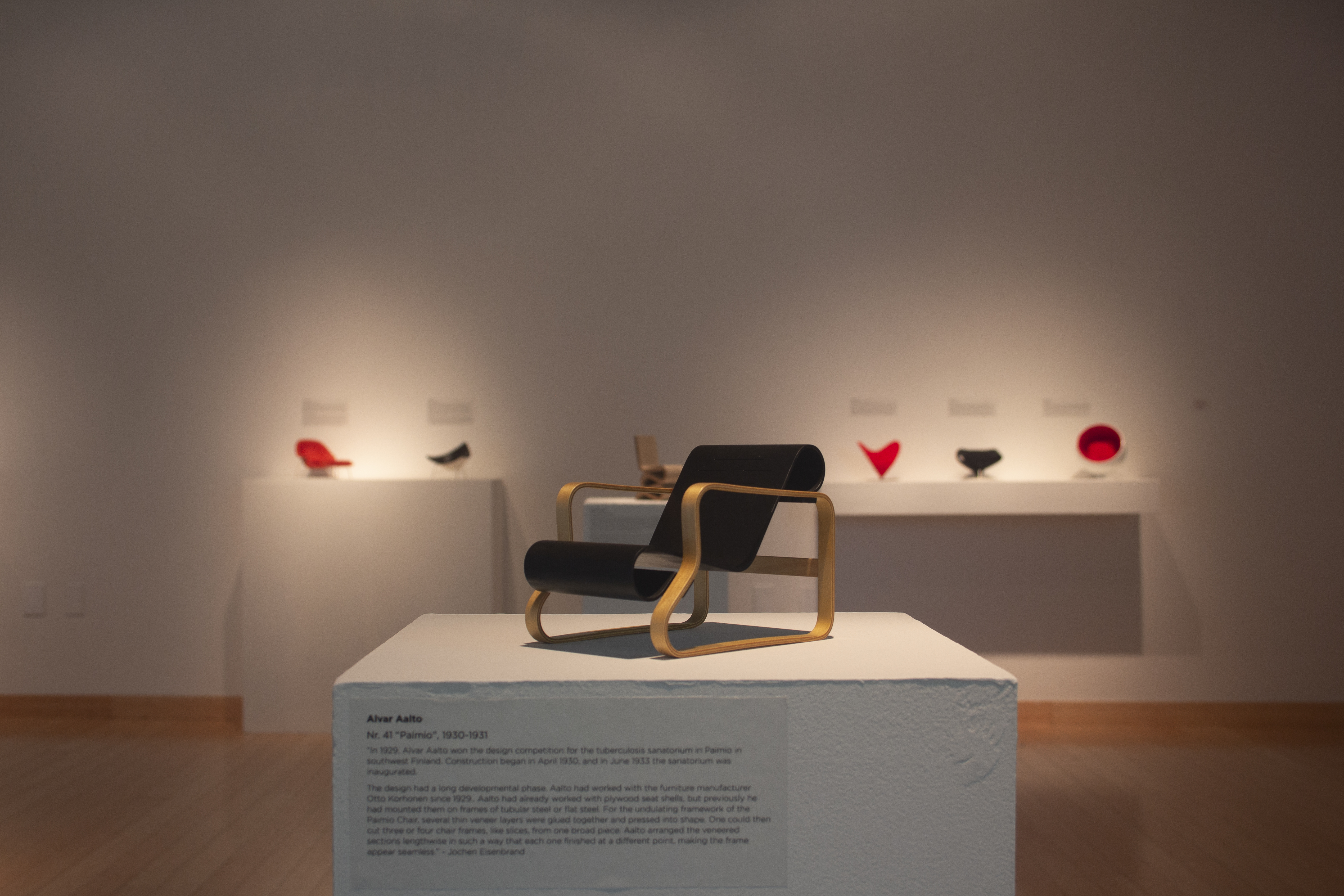
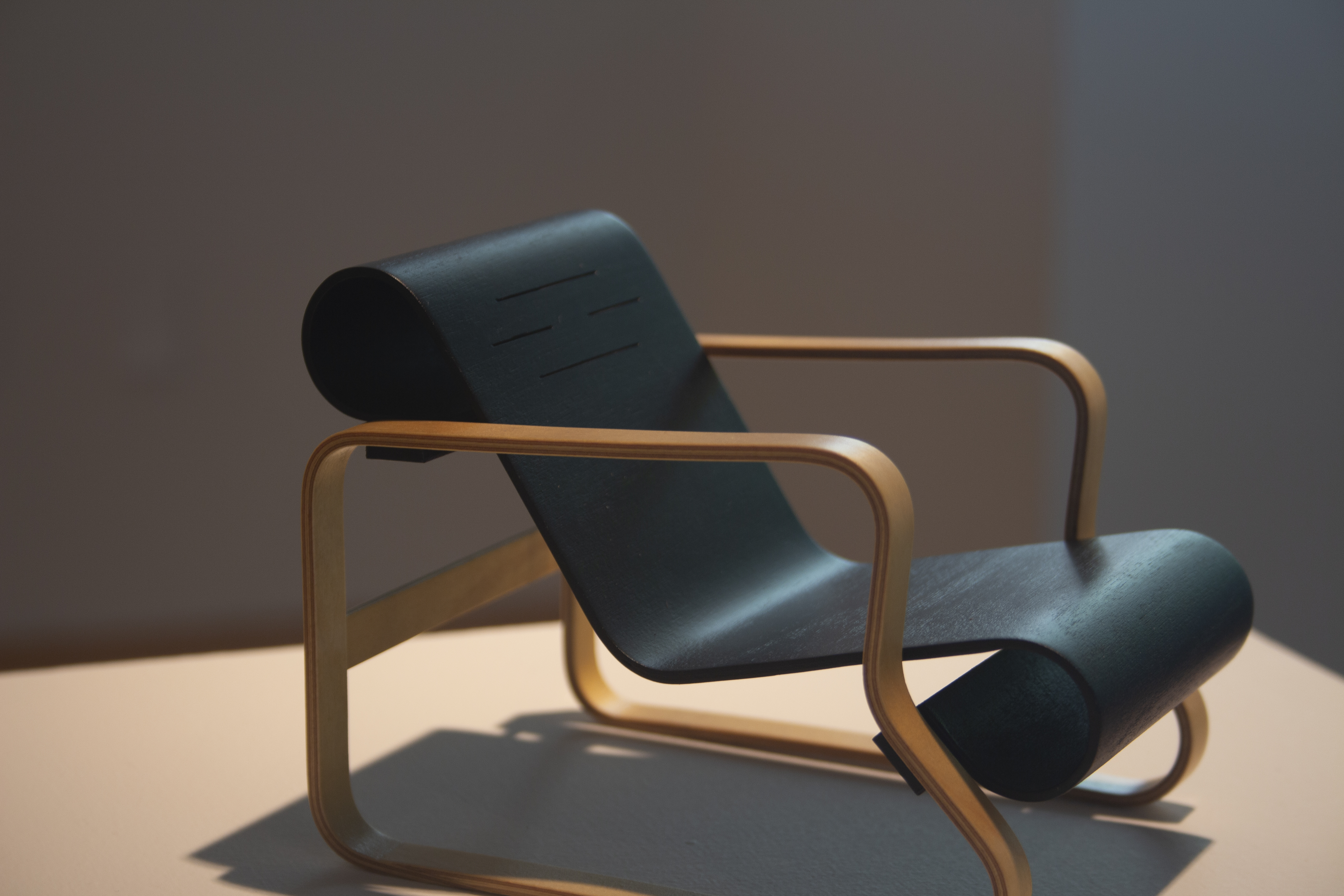
Ronan and Erwan Bouroullec
Vegetal, 2008
“Is it possible to "grow a chair? was the question guiding brothers Ronan and Erwan Bouroullec when designing their Vegetal chair. The designers found their answer in early-twentieth-century gardens featuring trees grown into furniture-like structures.
Vegetal was first conceived in drawings as a structure growing from four stems (the legs) into a network of branches (the seat shell). After this idea was presented to the manufacturer Vitra, it was adapted to the technique of plastic injection moulding: the cross section of the branches was optimized from an initial circular form to a T-shape by adding stabilizing ribs underneath it, and another layer of branches was added on top to make the seat more comfortable. Integrating the two front legs into the mould gave the chair stability. The result was a stackable chair in seven different hues, which has been sold by Vitra since 2008.” -Anniina Koivu

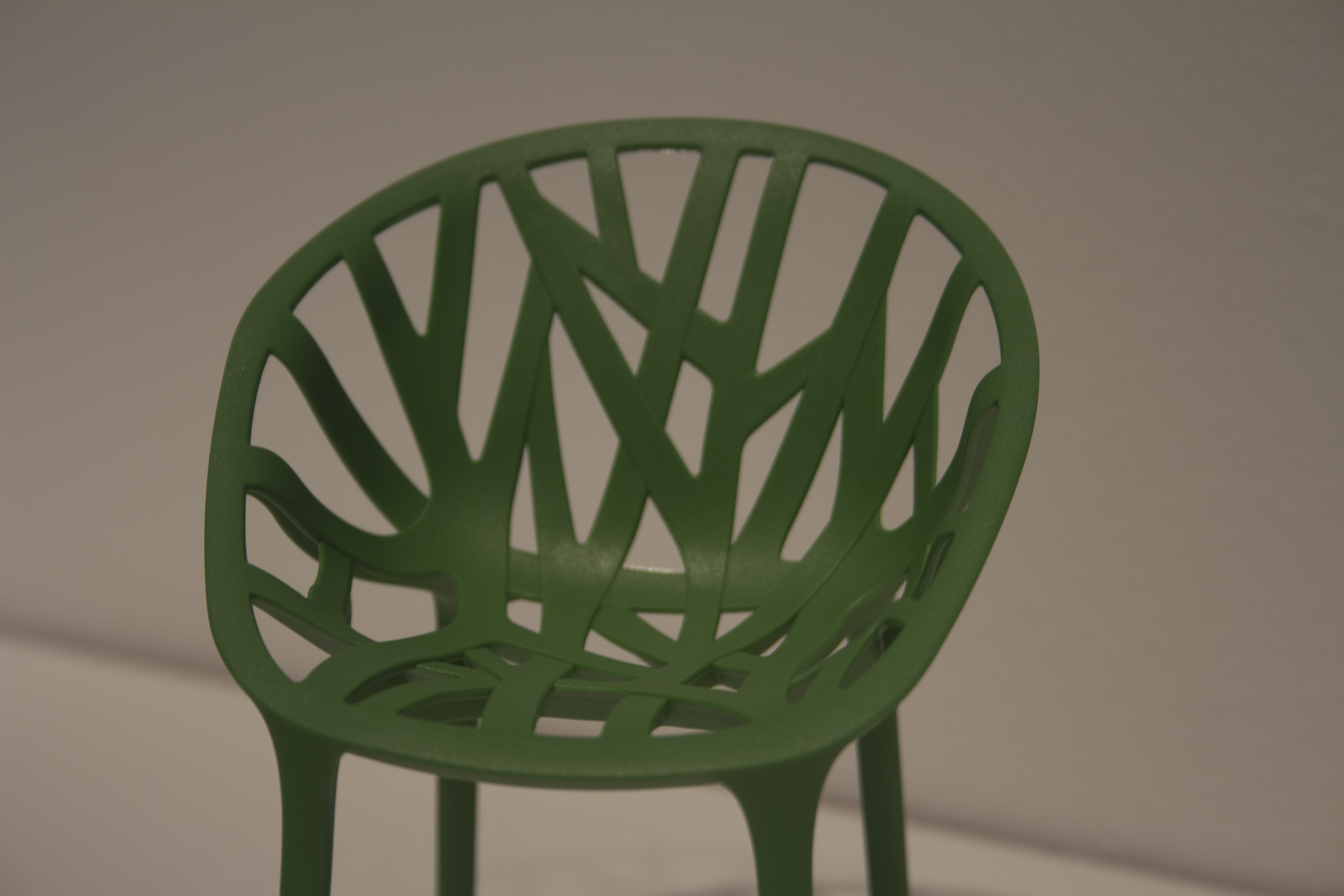
Eero Saarinen
Organic Armchair, 1940
“The Organic Armchair was created as a design for the competition Industrial Design Competition for the 21 American Republics (later to be known as Organic Design in Home Furnishings), announced by the Museum of Modern Art (MoMA) in New York in 1940. The retroactively established title has been the cause of some confusion over time. The objective was not, as one might be led to believe, to create organically or biomorphically shaped furniture. Instead, the initiators stated that 'a design may be called organic when there is a harmonious organization of the parts within the whole, according to structure, material, and purpose'.” -Mathias Remmele
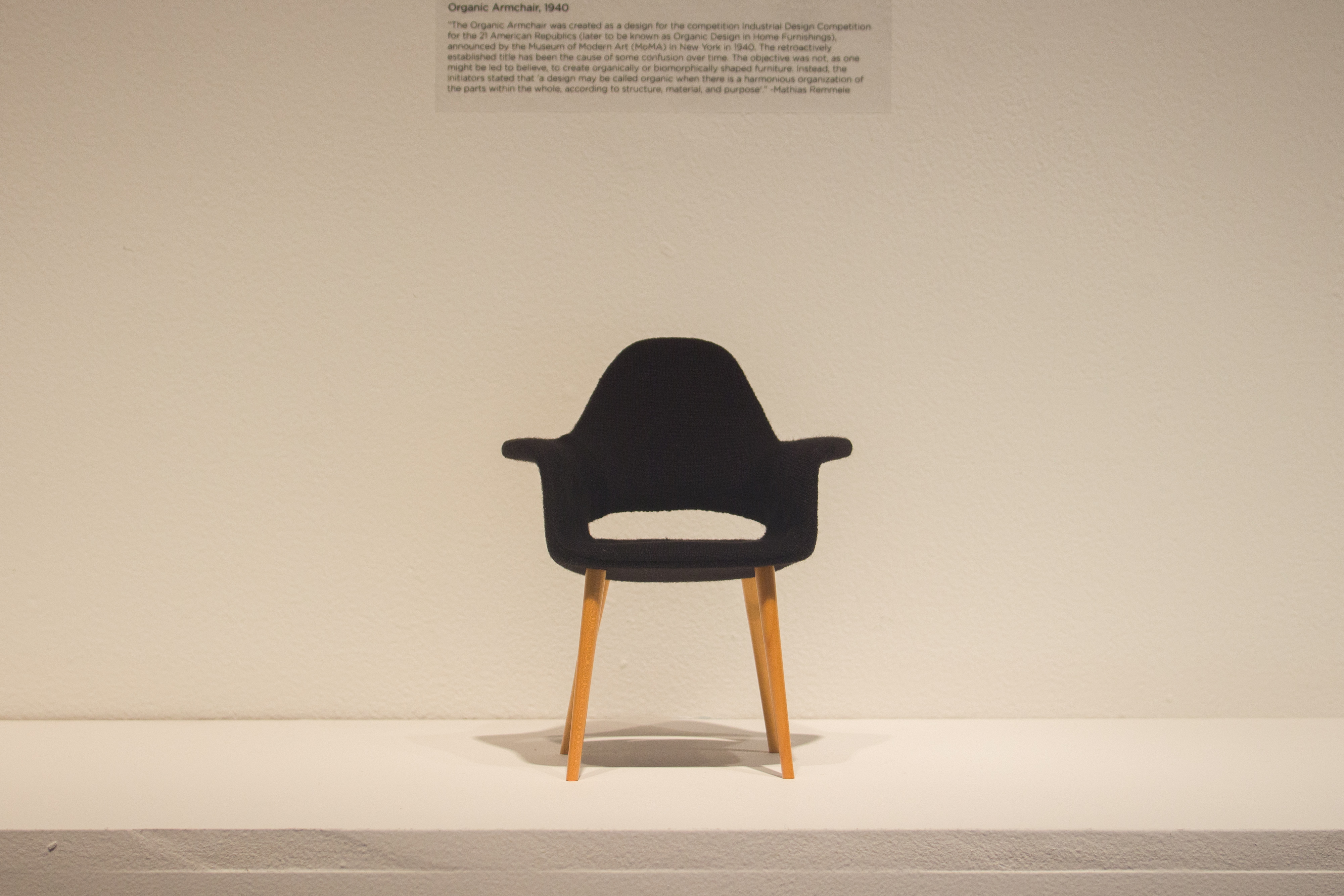
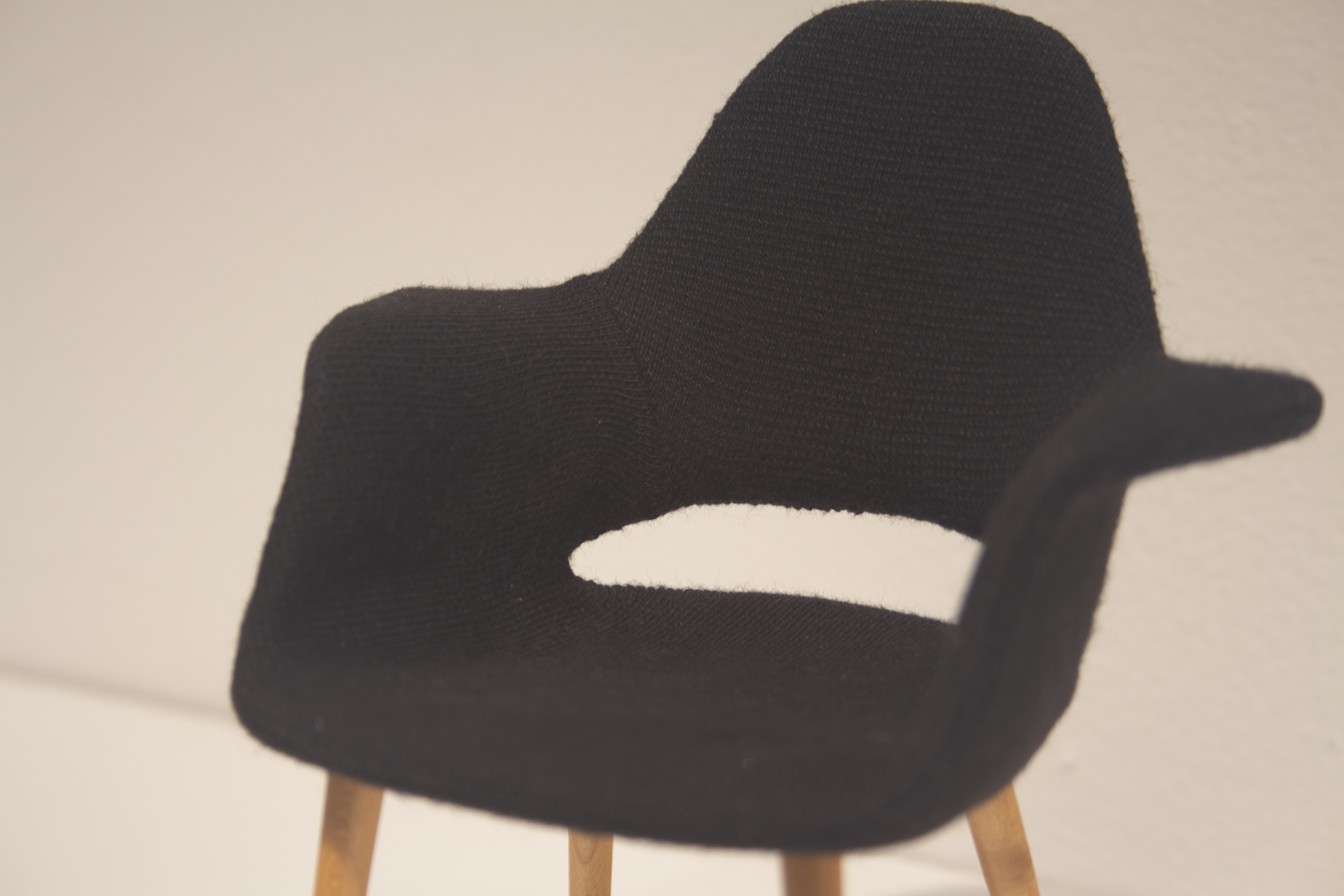
Charles & Ray Eames
LCW, 1945
“LCW (Low or Lounge Chair Wood) is, along with the DCW and DCM, the first serially produced plywood chair with compound curves in furniture history. It also marks the beginning of the designers' collaboration with the Herman Miller Furniture company. The chair features a remarkable three-part plywood base which, just like the shells for the seat and back, was developed in an extensive process of design and selection. Two U-shaped leg pairs are kept in place by a multi-ply bent element, which also serves as a mounting for the backrest. The Eameses transferred this ingeniously simple construction to the metal bases of other plywood chair designs. Although they often acknowledged a debt to Alvar Aalto, the latter used plywood that was only bent in a flat plane. When the I-CW and other Eames plywood furniture were launched in December 1945 and exhibited at MoMA soon afterwards, experts immediately recognized the significance of this innovative collection, which was to become a point of reference for many other designers.” -Mathias Remmele
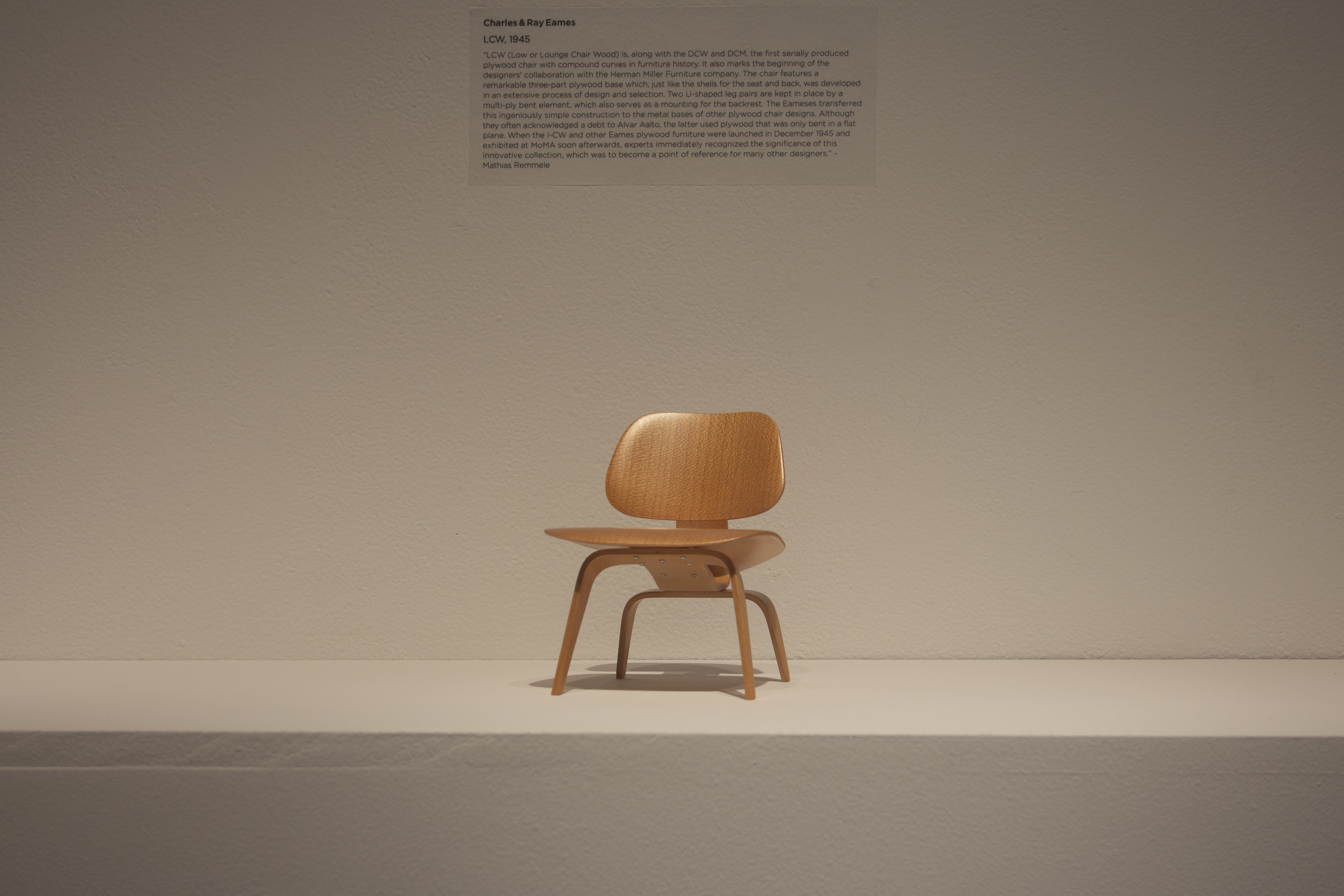
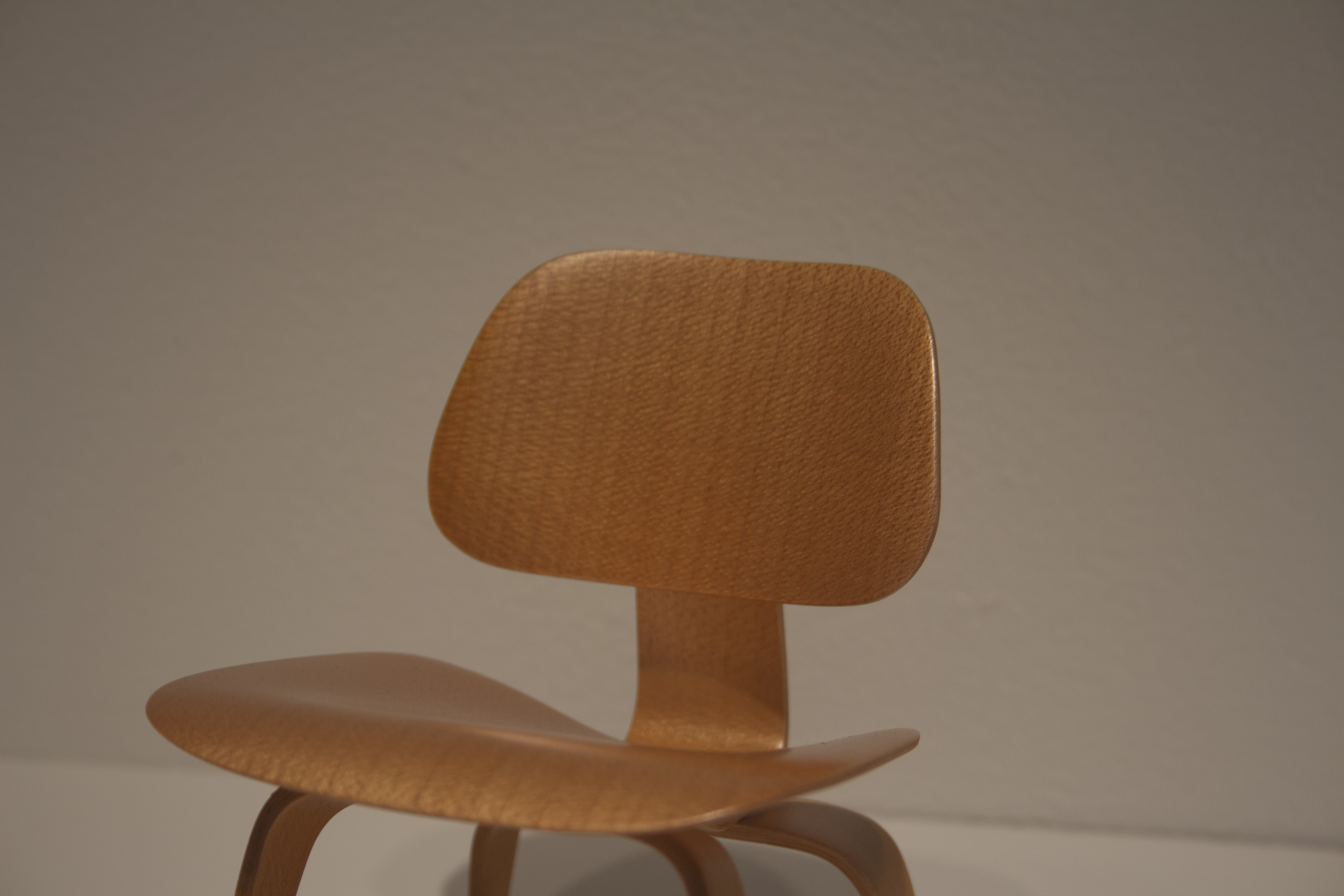
Eero Saarinen
Womb Chair & Ottoman, 1946
“Influenced by this social and technological context, the American architect Eero Saarinen was eager to move beyond established materials of plywood and laminated wood. Glass fibre reinforced polyester resin offered new creative possibilities and triggered his interest. It was strong and yet lightweight, and without any structure of its own it could be moulded and mass-produced at a relatively low price. This material was thus perfectly suited for creating a chair using the 'truncated cone method', a process for which Saarinen filed a patent application in 1948. This patent was based on the fact that the geometric form of a cone could provide a curved seat shell that would entirely encircle its occupant.
In Trenton, New Jersey, they discovered a shipbuilder who specialized in producing fiberglass boats the Winner Manufacturing Company. Even though Winner did not believe this technology could be applied on a large scale to furniture, their collaboration led to several prototypes in the 70-Series. Among these was the voluminous model No. 70, which became famous as the Womb Chair. The name results from Saarinen's attempt 'to achieve a psychological comfort by providing a great big cup-like shell into which you can curl up'. He went on to explain that 'a great number of people have never really felt comfortable and secure since they left the womb'. The Womb Chair thus perfectly embodied the social shift towards a more informal sitting culture of the post-war years, accommodating various relaxed positions when seated, even with one's legs pulled up.” -Anniina Koivu

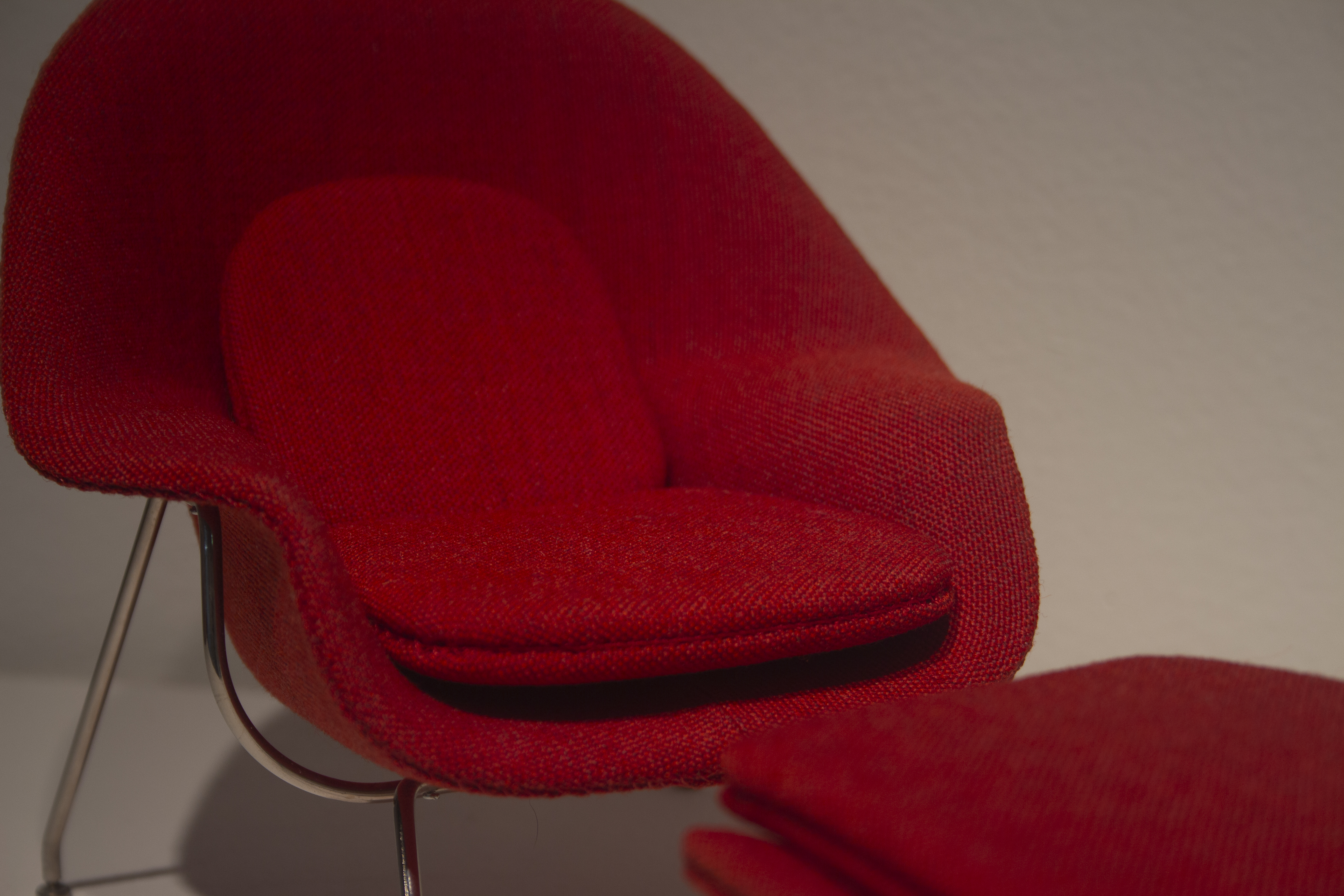
Marcel Breuer
B3 Wassily, 1925
“The B3, better known these days as the Wassily, is Breuer's first real tubular steel chair and the first ever to be made specifically for a domestic interior. Although essentially a typical club chair, the B3 has been stripped of all padding and reduced to a skeletal, load-bearing frame made up of lines (the steel tubes) and planes (formed by either the canvas, the Eisengarn canvas, made of yarn treated with paraffin and then polished, or leather).
While the first, now lost, version of the Wassily had four feet and numerous welds, Breuer continued experimenting until he succeeded in replacing the welds with screw unions and, from 1928 onwards, closing the backrest, until then open along the top. At least five different versions of the chair were produced.” – Otakar Máĉel

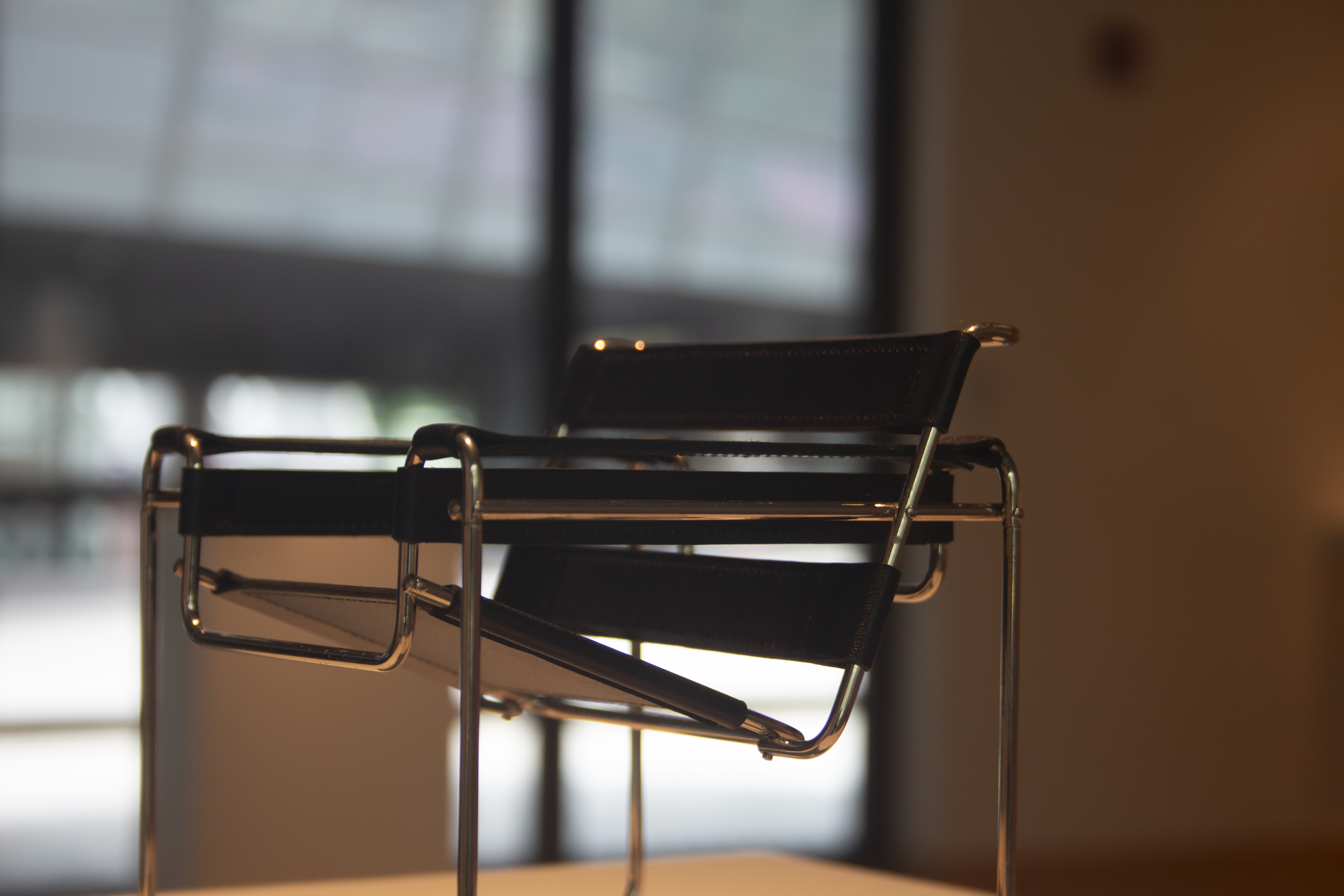
Jean Prouvé
Antony, 1950
“The architect, engineer, and designer Jean Prouvé was intent both in his architectural and design work on employing highly advanced metal working techniques to create innovative constructions and shapes. He played an influential role in developing a construction method for architecture based on lightweight prefabricated sections and drew amongst other things on this knowledge of aircraft and car construction. In 1947, he set up his own company Ateliers Jean Prouvé, which not only produced these lightweight elements, but also his own furniture designs.” -Vitra Design Museum
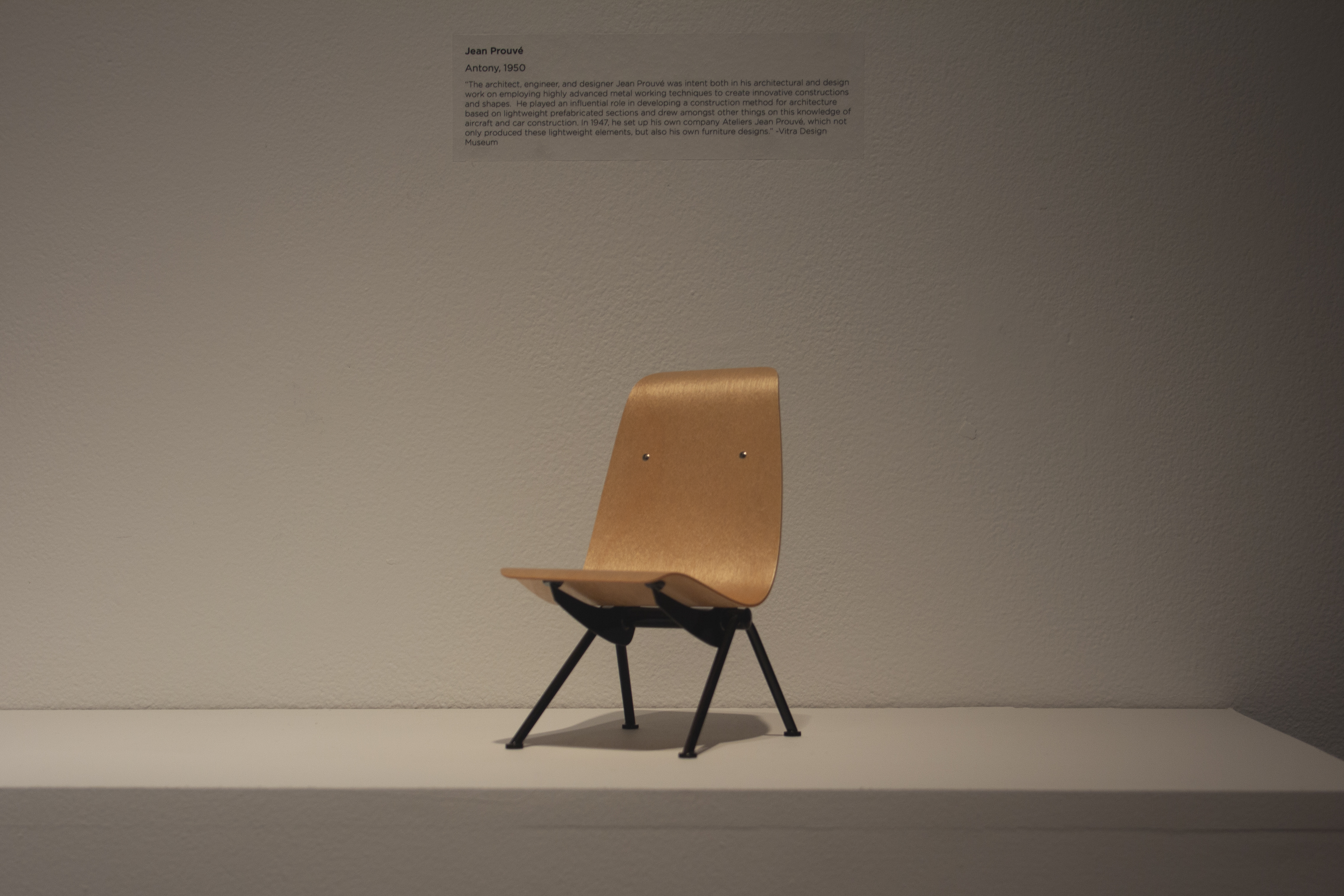
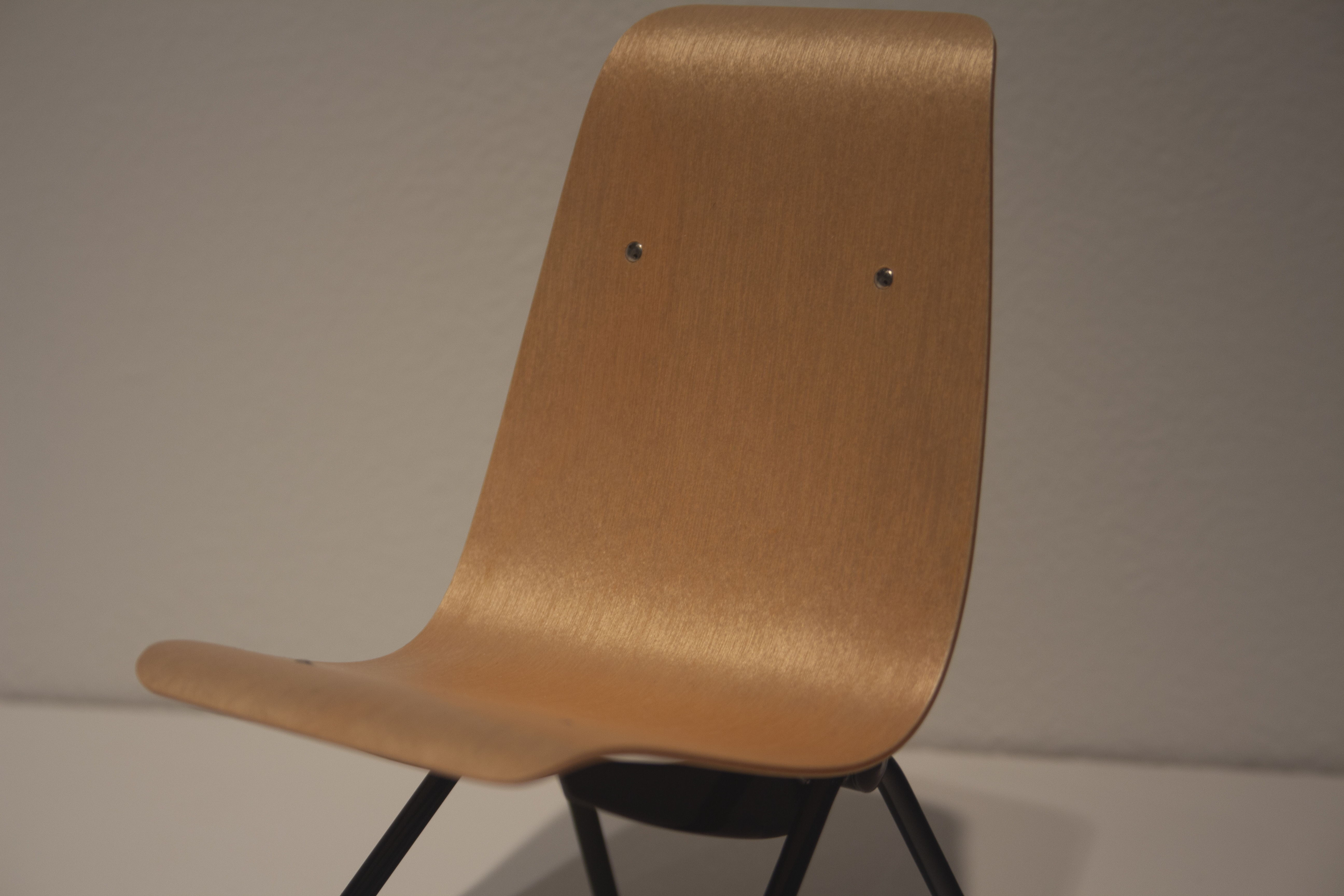
Eero Saarinen
Tulip Chair, 1956
“Saarinen strove for innovative and functional solutions in all his designs, whether in architecture or furniture. Yet like many of his American and Scandinavian peers, he rejected the austerity often associated with the Bauhaus and European avant-garde movements in favor of a more humanistic approach. In 1955, after discussions with Hans and Florence Knoll about new furniture, Saarinen came up with sculptural designs for a one-legged chair. His intention was to clear up the clutter of table and chair legs that had turned interiors into what he called an 'ugly, confusing, unrestful world'.
A fiberglass shell and a separate metal base. Cast as one piece from aluminum, the hollow conelike base flares open towards the ground to form a large and stable disc. Lacquered in the same color and paired with the continuous curving lines from seat to stem and base, each chair appears to be one single form. The association with a flower stem not only emphasizes the uniformity, it is also eponymous for a design known as the Tulip Chair.” -Anniina Koivu
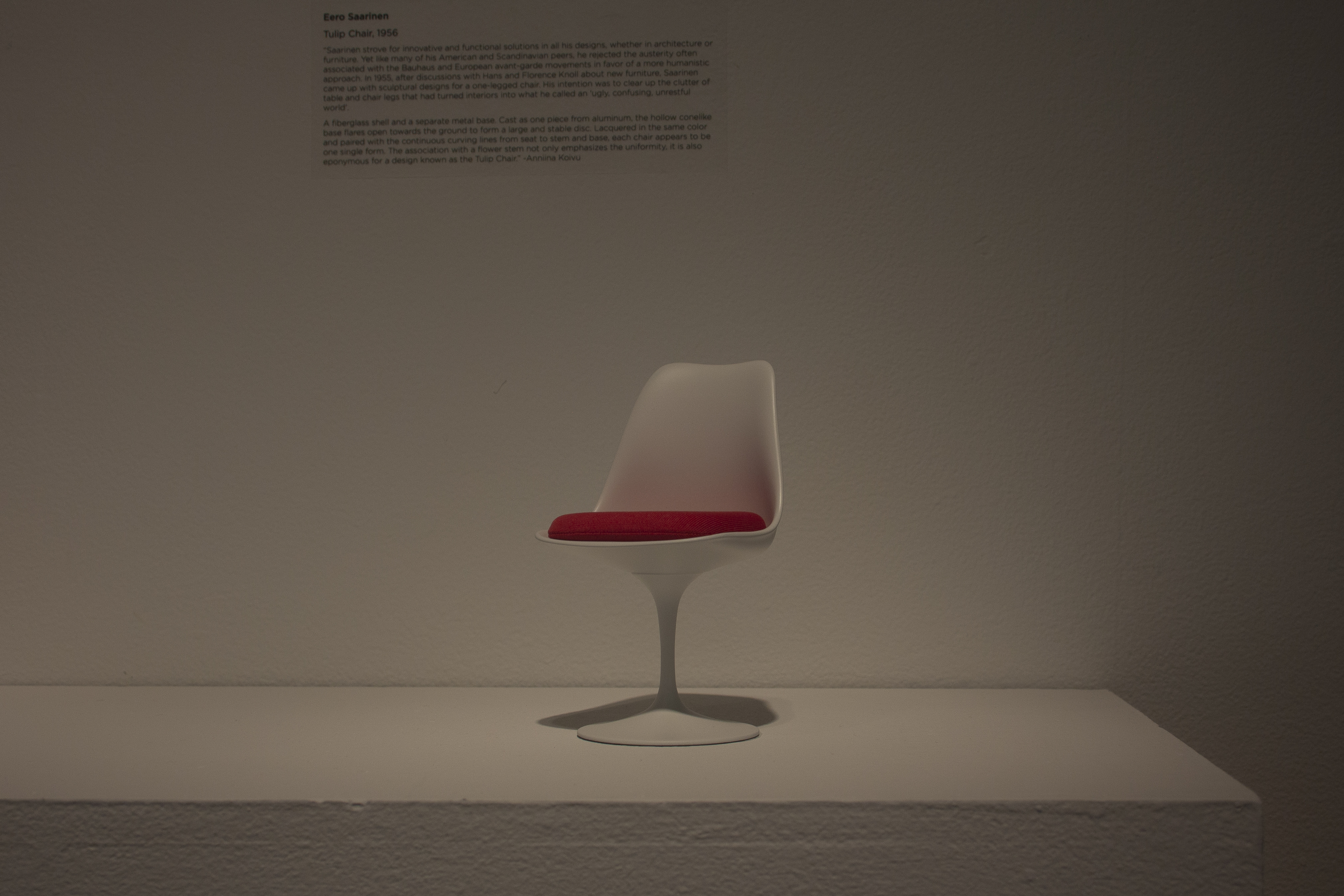
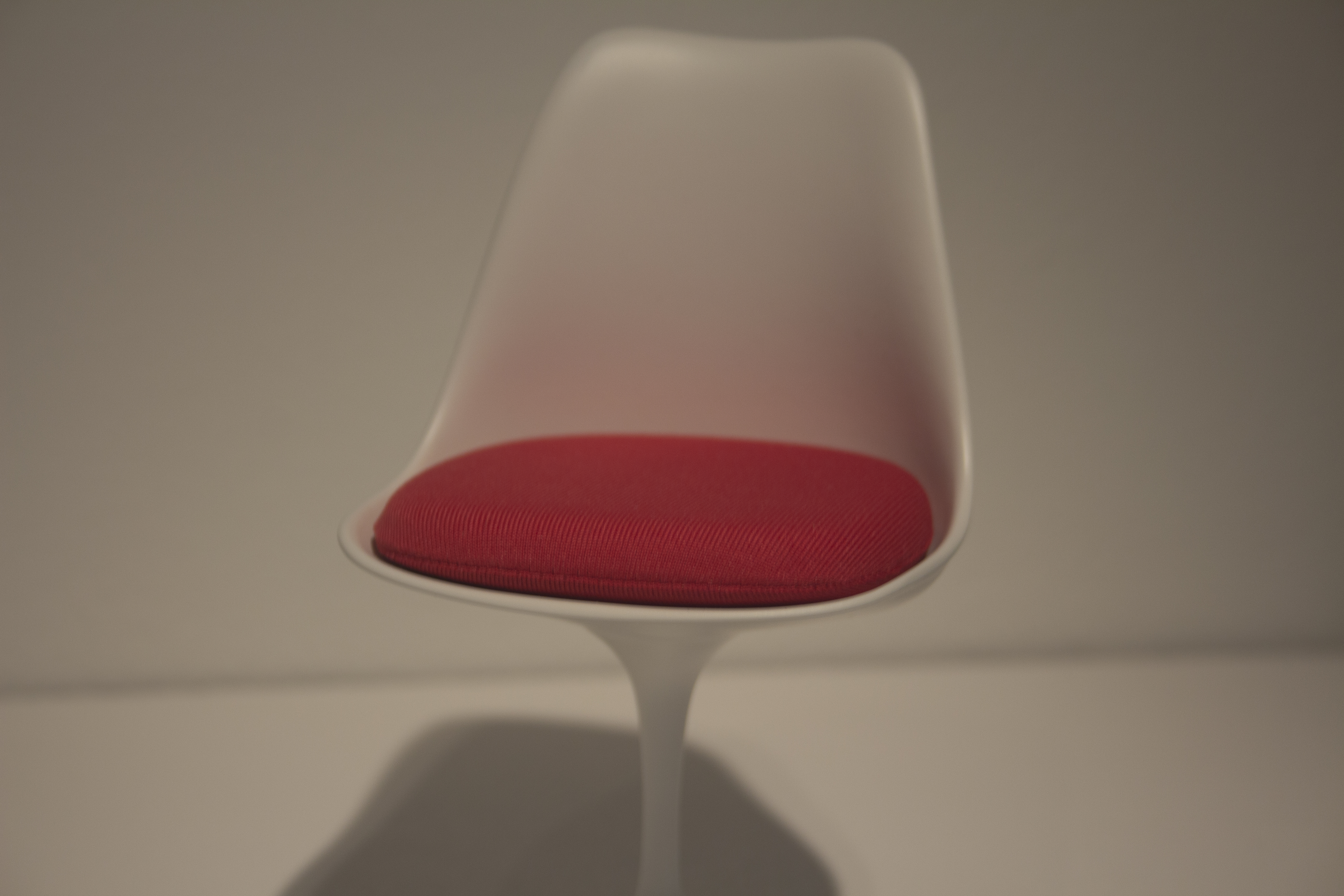
Ludwig Mies van der Rohe
MR 90 “Barcelona”, 1929
“Rohe designed the Barcelona Chair while furnishing the German pavilion at the International Exhibition in Barcelona in spring 1929, following on from his Barcelona Ottoman. Of at least six copies delivered to Barcelona, Rohe expressly ordered that only two were to be placed in the pavilion — side by side and perpendicular to a wall. The chairs in the pavilion featured diagonally buttoned cushions, with, according to Mies, a white kid leather covering. Initially called the Pavillonsessel (pavilion chair), it began to be referred to as the Barcelona Chair when Philip Johnson ordered two copies for his Mies-designed Manhattan apartment in September 1930.” -Wolf Tegethoff
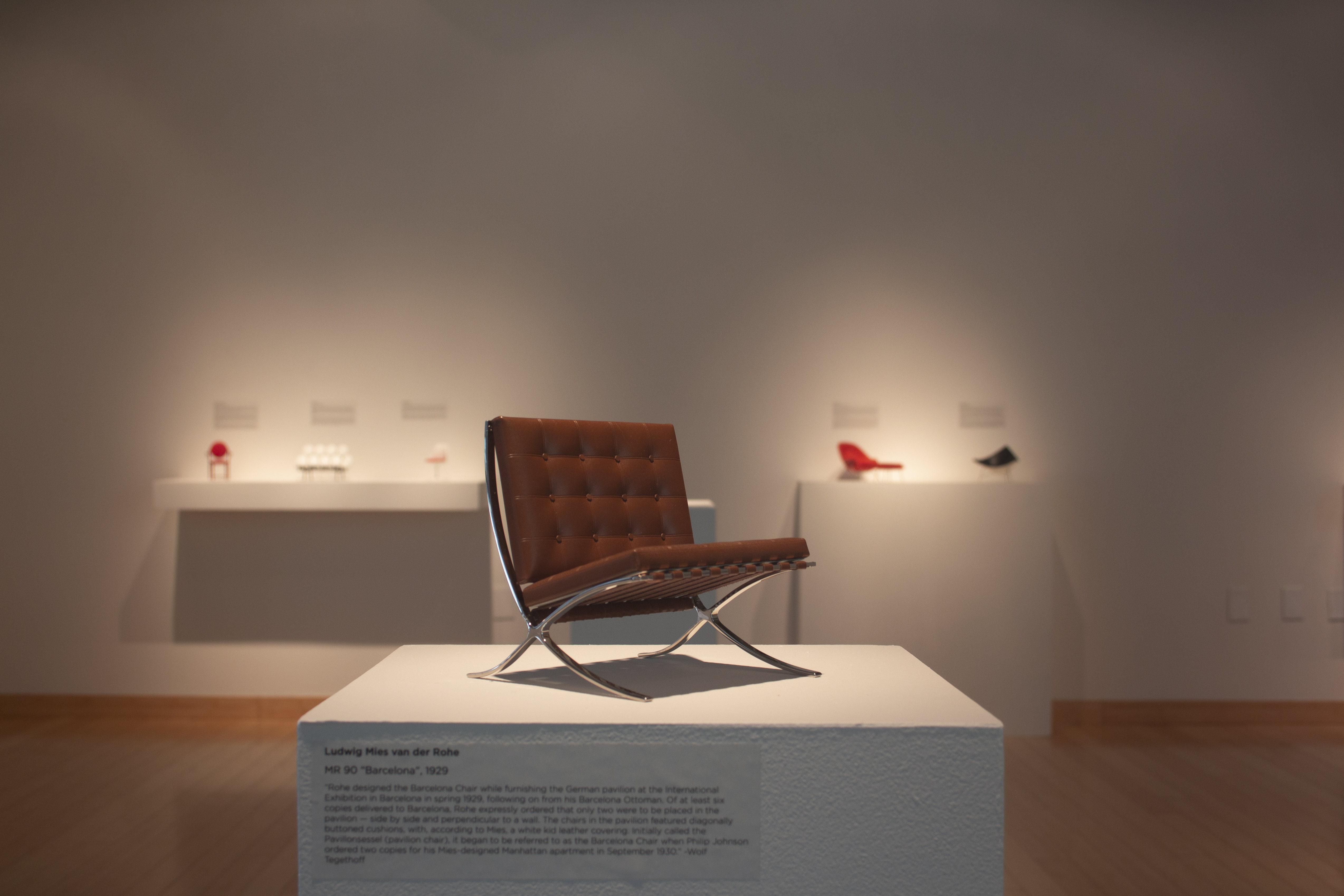
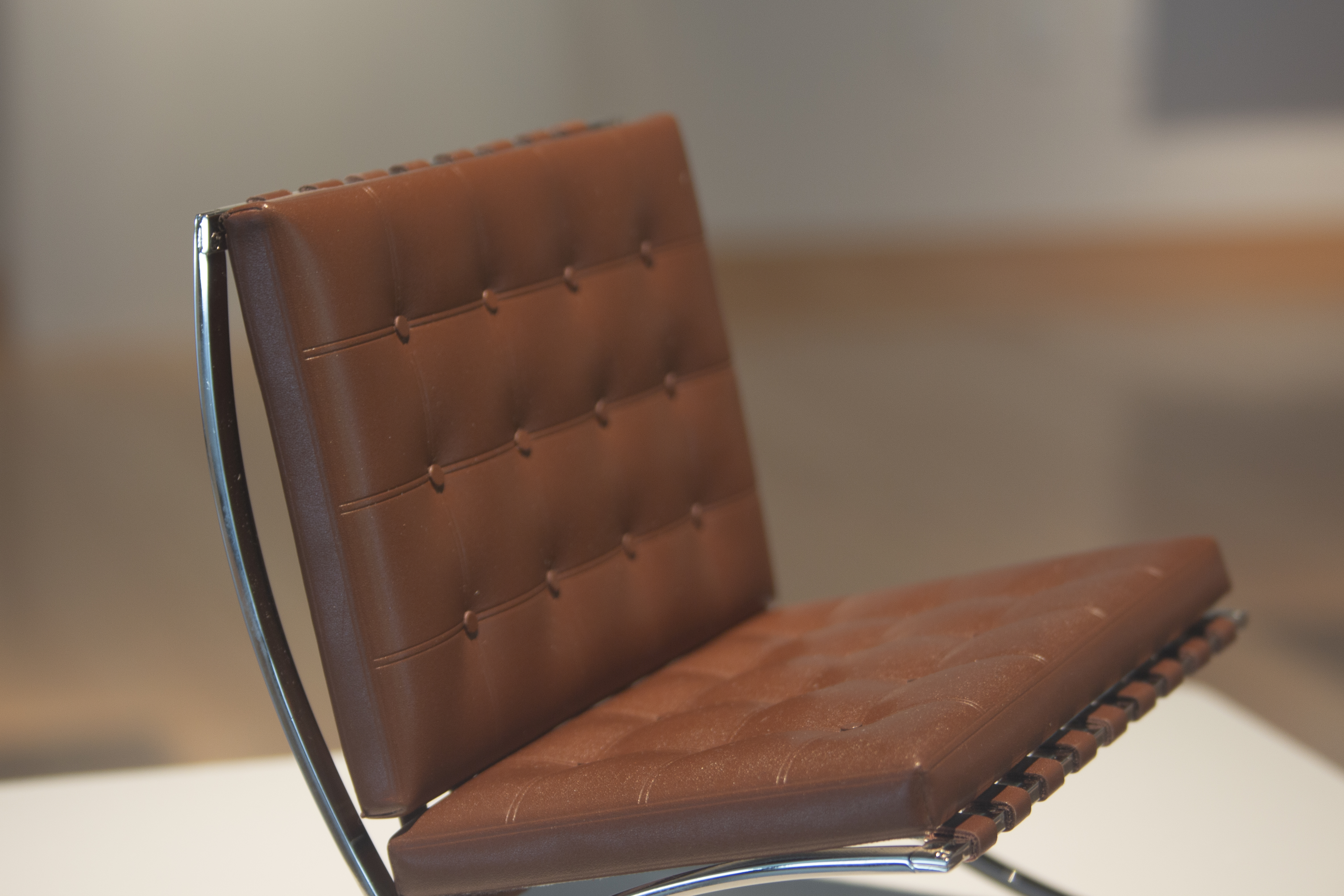
Michael Thonet & Söhne
No.14, 1859-1860
“Gebrijder Thonet's first catalogue sheet, printed in 1859, contained twenty- six serial models, including fourteen different chair models, numbered 1 to 14. The chairs were essentially identical in form and differed only in the design of the backrest. Chair No. 14 was the simplest in the series. Its two back legs and backrest are made of a single bentwood arch with a shorter bentwood arch inside it. The only other parts are the seat frame with a caned seat and the two front legs, which are screwed into the seat frame.
The simple shape of the No. 14 is said to have been made possible by the technique of bending solid wood patented by Michael Thonet in 1856. The theory that the No. 14 owes its form solely to a specific manufacturing technique is refuted by the discovery in recent years of some examples made by Michael Thonet using his older lamination method. One such No. 14 made of glued laminates can be seen in the Imperial Furniture Collection in Vienna. The No. 14 has nevertheless remained the cheapest and most widely produced chair model in the whole Thonet range, which is why it came to be known as the 'cheap consumer model'. It cost just three gulden when first sold, roughly equivalent then to the price of three dozen eggs. No fewer than fifty million of these chairs were sold worldwide between 1859 and 1930.” -Eva B. Ottillinger
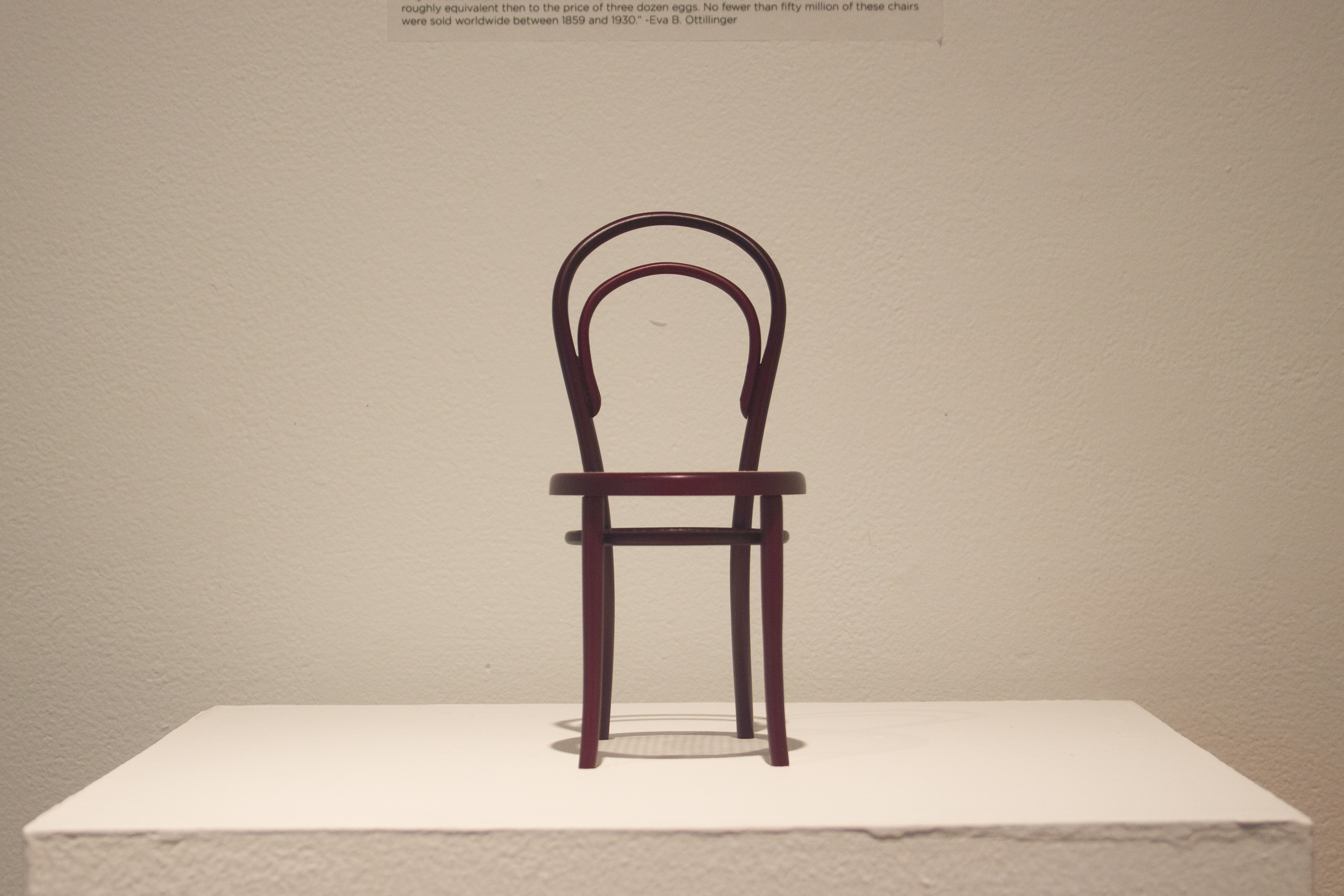
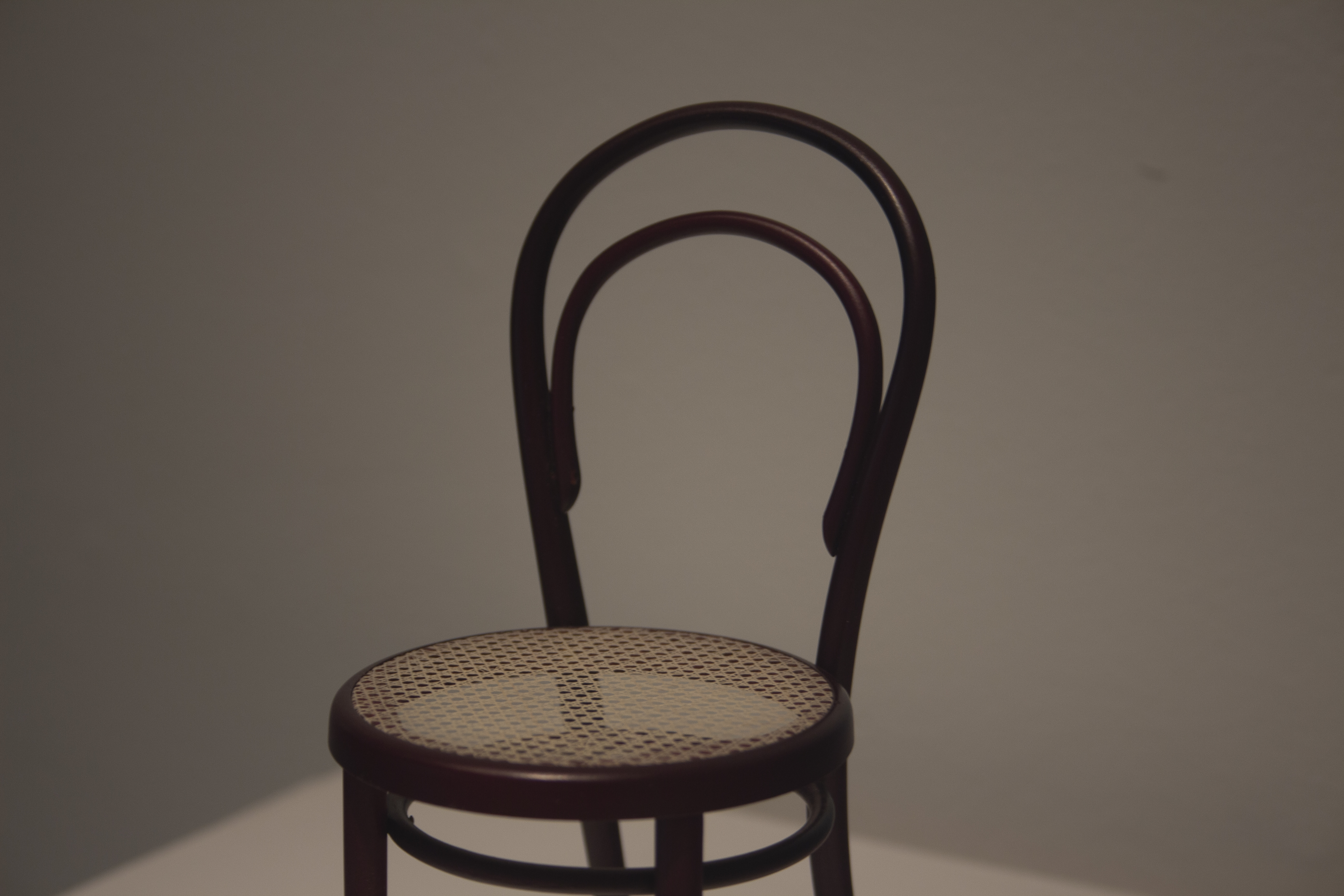
Hans Wegner
3-Bener Skalstol, 1963
“Wegner revisited the shell chair theme in 1963, when he strove to simplify the construction in order to minimize Hansen's investments in tools and production technology. He created several chair models to test different underframes. The first full-size prototypes did not yet feature the characteristic gap inside the legs. Adding a space between the layers of wood at the peak of the bend mould enabled a very strong construction and added a decorative feature, as the final version, shown here, demonstrates. This is typical of many of Wegner's designs, in which seemingly decorative characteristics play a constructive or functional role. The same is true of the oblique angle of the legs, which provides stability while also contributing to the chair's light and graphic appearance.” -Christian Holmsted Olesen

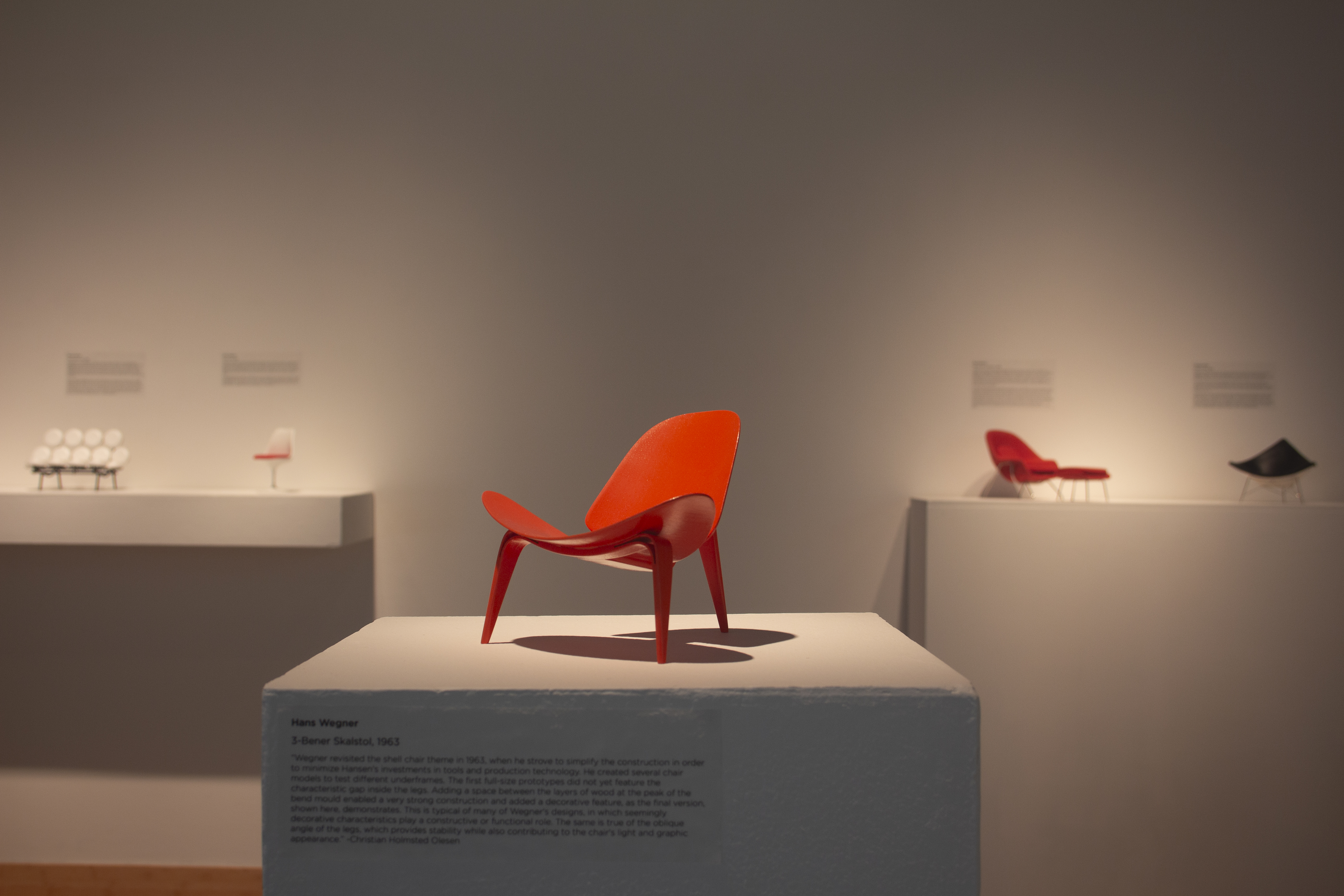
Frank Lloyd Wright
Barrel Chair, 1904
“Originally designed by Frank Lloyd Wright in 1904 for the D.D. Martin House in Buffalo, New York; this iconic chair was an embarkation from his earlier linear furniture designs; due to its round shape. Original features included a flared backrest, square spindle supports and a cushioned double-sided circular seat.
In 1937, Frank Lloyd Wright re-created the Barrel Chair design in a larger version with other design modifications for the residence of Herbert F. Johnson, known as “Wingspread”, to accommodate the expansive rooms and towering ceiling heights.” -Vitra Design Museum


Gerrit T. Rieveld
Roodblauwe Stoel, 1918
“The Dutch architect and cabinetmaker Gerrit Rietveld designed the precursor to his famous Red Blue Chair in 1918/19. He submitted this model, which was still unpainted, to the exhibition Aesthetisch uitgevoerde gebruiksvoorwerpen (Aesthetically Produced Utensils) at the Museum for Applied Arts in Haarlem, which included a competition for the best design for a simple lounge chair that could be manufactured for less than 35 guilders. The artist Theo van Doesburg simultaneously published the design in the De Stijl journal.
Probably influenced by De Stijl, Rietveld painted his furniture from the 1920s, limiting his palette to white, grey, black, red, yellow, and blue. The first mention of a coloured version of the Red Blue Chair dates from 1923. Its colour scheme reinforces the original design in that the seat and back are more clearly recognizable as separate elements, and the yellow cross-cut ends of the slats accentuate the three-dimensional interplay of lines of the black slats.
Until 1924 Rietveld manufactured the chair himself. Thereafter production was continued by Gerard van de Groenekan, who took over Rietveld's workshop in November 1924.” -Ida van Zijl
Marcel Wanders
Knotted Chair, 1996
“The lounge chair came into being during the Dry Tech project initiated by the platform Droog Design in 1995 in collaboration with the Faculty of Aerospace Engineering at the Delft University of Technology, Netherlands. Three designers — Marcel Wanders, Hella Jongerius, and Martijn Hoogendijk — were invited to create a design utilizing the ultralight materials that Professor Adriaan Beukers and his team had been using for years in aviation engineering. Wanders asked the Eurocarbon company in Sittard, Netherlands, to produce an aramid cord with a carbon fibre core, which he hand-knotted to create a net structure. The soft net was then infused with epoxy resin, left hanging to harden and set the chair's shape, and sand blasted. This method harnessed the force of gravity to create the parabolic shape of the seat and back.” -Ingeborg de Roode
Frank O. Gehry
Wiggle, side chair, 1972
“Collaborating with artist Josh Young, this playful approach resulted in the seventeen models for the Easy Edges furniture series, which, along with the Wiggle Side Chair, included a bar stool, side tables, a dining table, and a rocking chair. Manufacturing the pieces proved easy: first, the profile of a model was cut from cardboard and placed in a jig. Then, further staggered layers of cardboard were added and laminated until the desired width of the piece was reached. The gluing of the layers only took around one minute. For some models, metal pins or dowel rods were used as stabilizing elements. Finally, the surface was sanded and sealed with wax.
When the model depicted here was introduced, it cost only seven US dollars to produce and sold at thirty-seven dollars retail. Practically overnight, Easy Edges and the ensuing media interest made Gehry famous for furniture design – much to his dismay, as he saw himself primarily as an architect. Unhappy with the situation, he ceased production after only three months and dissolved the company. As all patents for the furniture were in his name, his partners were not able to continue production without his consent.” -Barbara M. Eggert
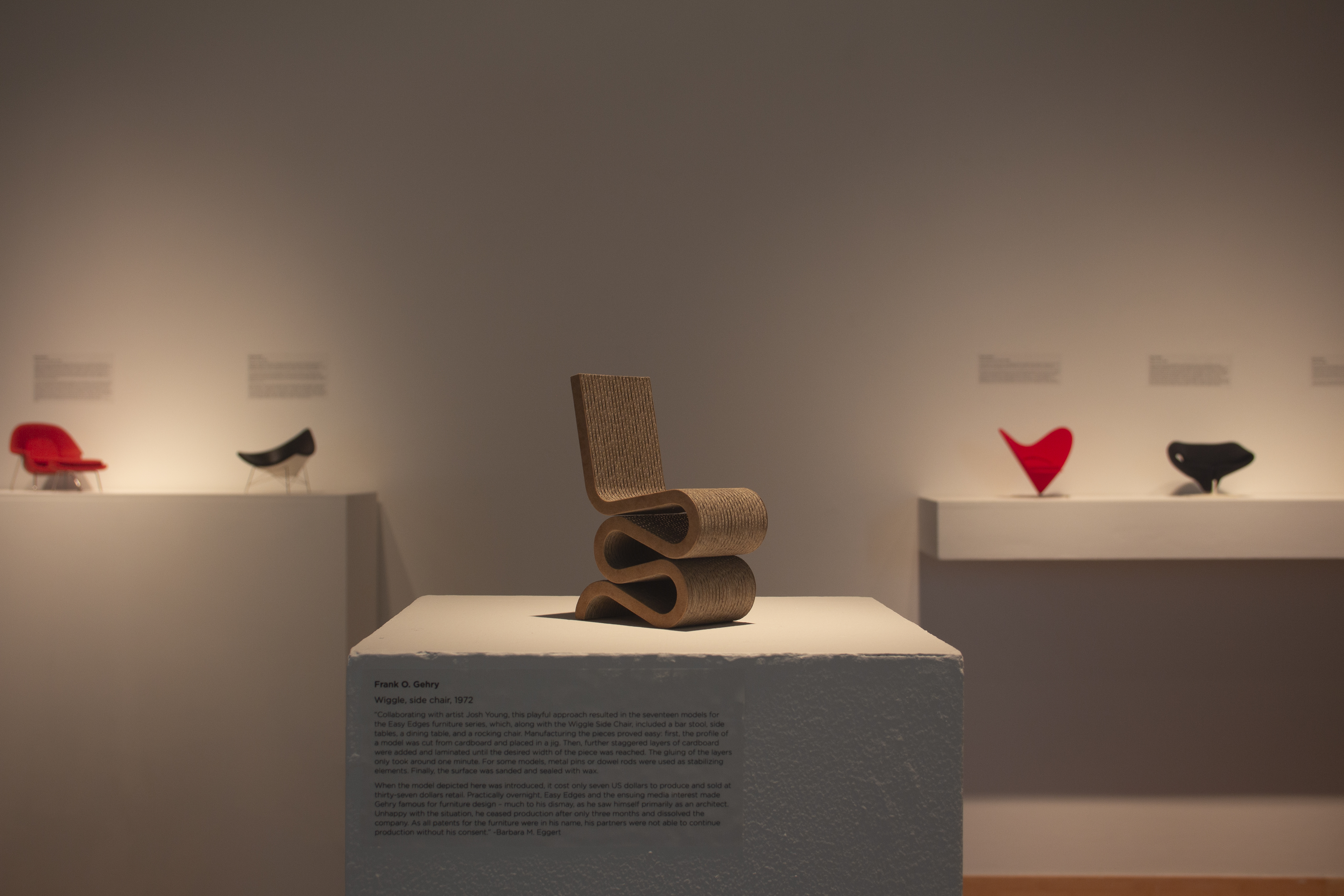

Ludwig Mies van der Rohe
MR 20, natural leather, 1929
“Rohe's first designs for furniture made of cold-bent tubular steel date from the summer of 1927. In August, Mies obtained the first-ever patent for a so-called Freischwinger, a resilient cantilever chair, for the model MR 20 shown here and a version without armrests, the MR 10. To distinguish his invention from older American patents for similar chairs, he made the large, semicircular front runners both a formal and functional feature, their purpose being to make the chair pleasantly resilient.
According to contemporary press reports, the models from the MR series were initially nickel-plated. The chrome-plated variants are first recorded in late May 1929, when they were featured in the German sections of the World's Fair in Barcelona. The seat and backrest were available in either leather or Eisengarn canvas. The early models' back covering was fitted with eyelets and screwed straight onto the side pieces rather than laced. This led to tears, however, which persisted even on later models reinforced with iron clasps.” -Wolf Tegethoff
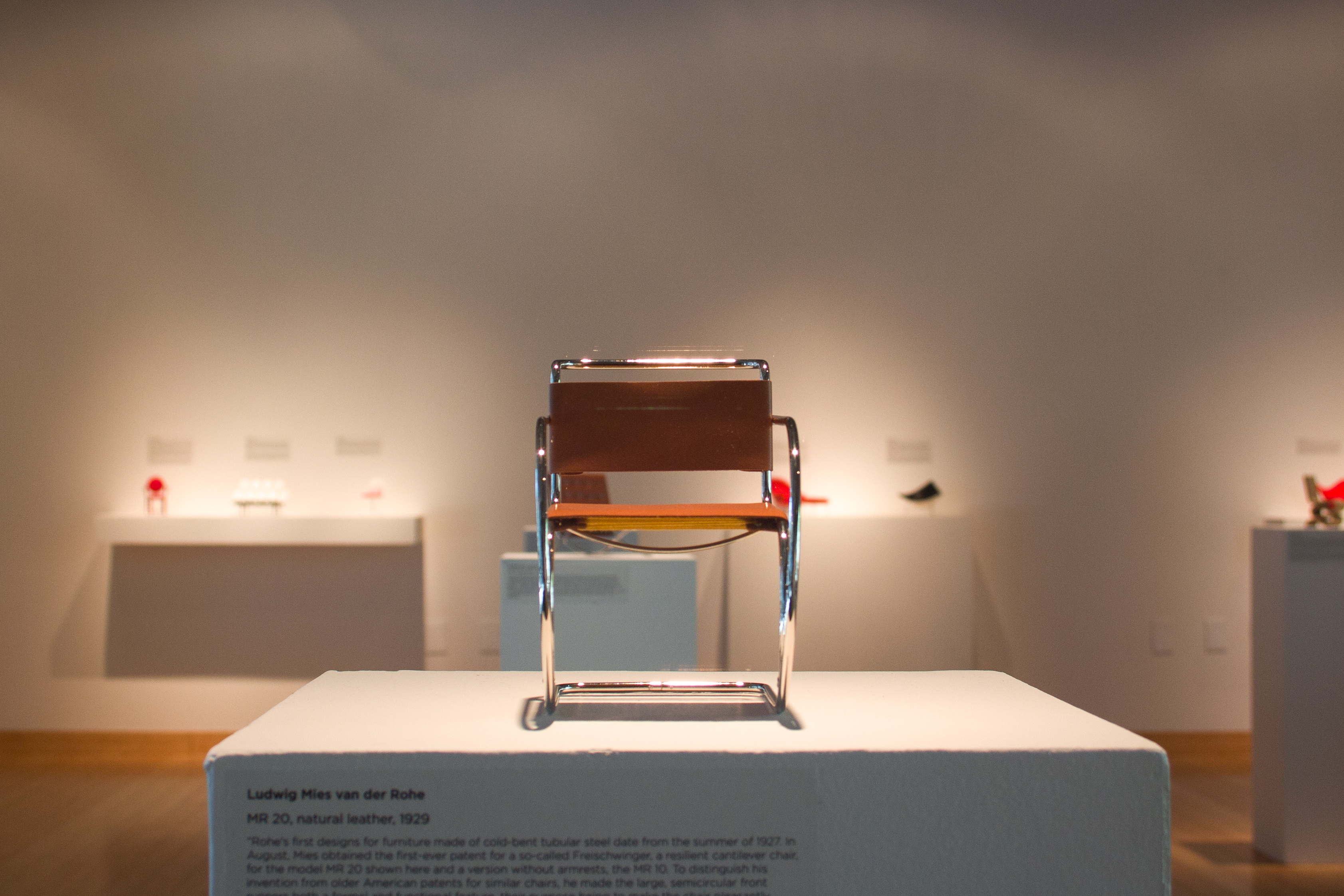
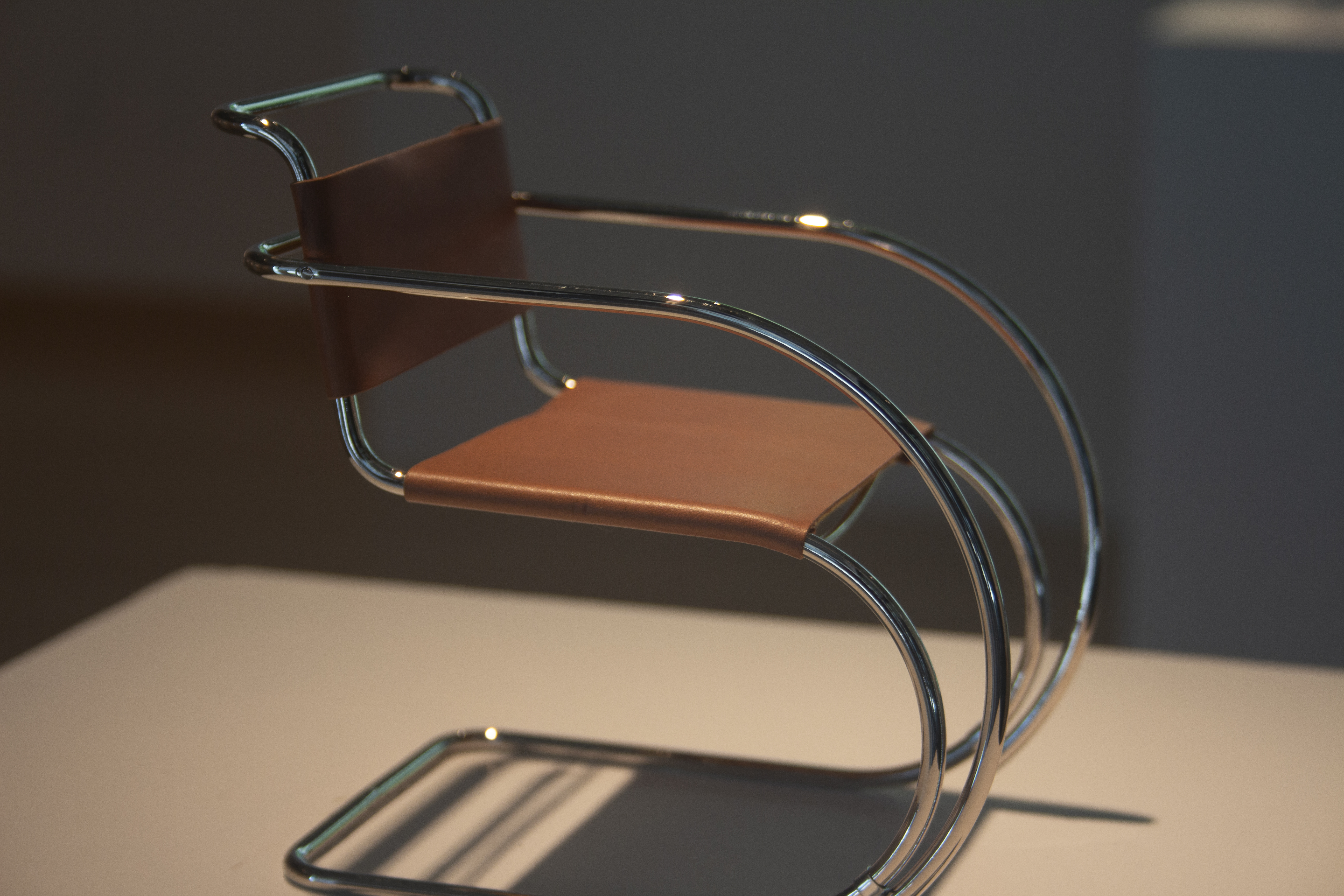
Hans J. Wegner
Y-Chair, 1950
“Hans J. Wegner gained world renown for his ability to give the old cabinetmaker's craft a modern and functionally motivated expression — features which became synonymous with Scandinavian mid-century furniture. Beyond his work on high-quality cabinetmaker's furniture, Wegner also experimented with modern wood handling technologies such as the moulding of plywood. At the Copenhagen Cabinetmakers' Guild exhibition in 1949, Wegner presented the chair that made him known around the world. After 1949, he and Wegner had to work hard to keep up with the international demand for modern cabinetmaker's furniture and were not able to continue their plywood experiments of the late 1940s.” - Christian Holmsted Olesen

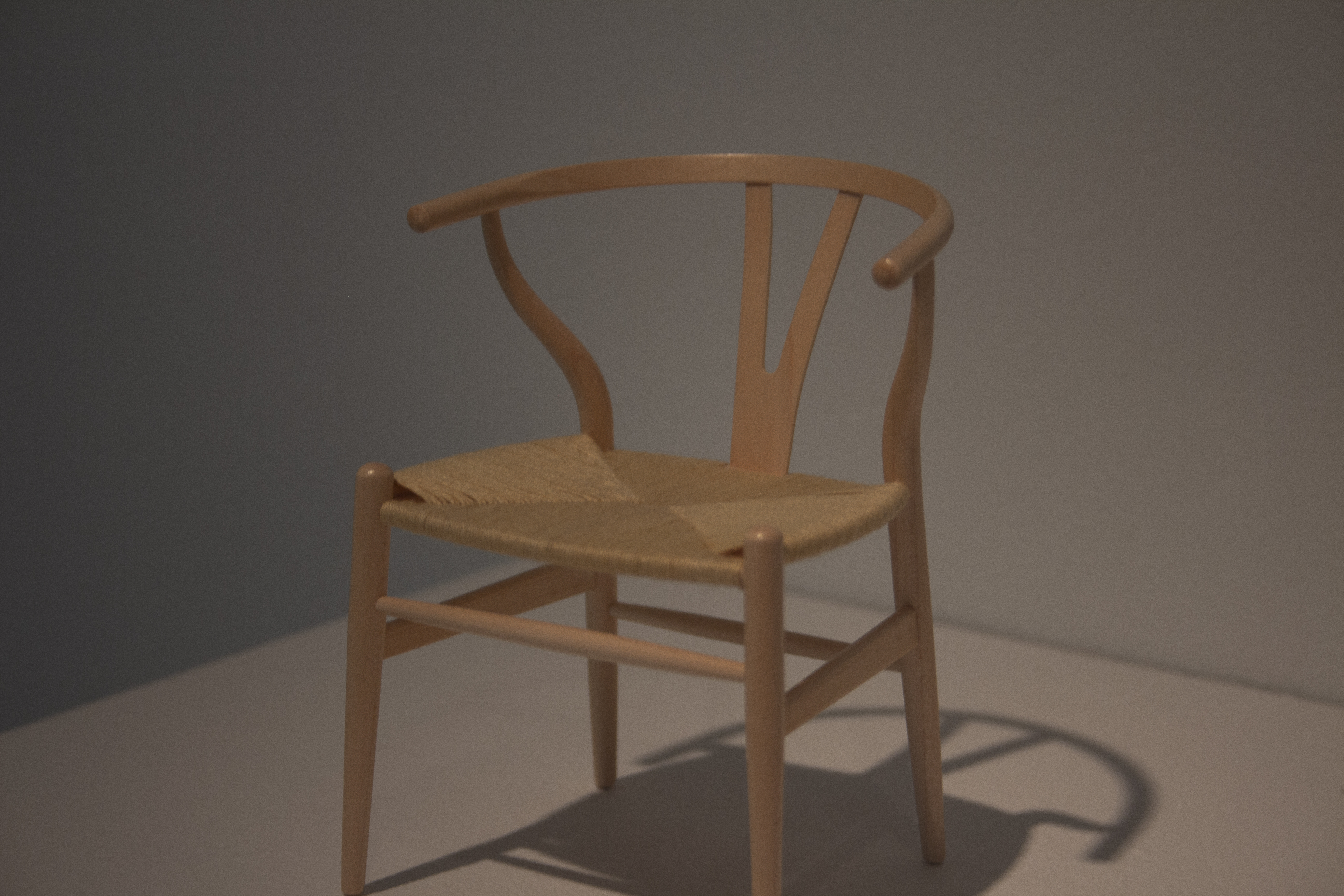
Eero Aarnio
Ball Chair, 1965
“With its simple, striking shape and its bright colors Eero Aarnio’s Ball Chair is a typical symbol of the optimistic, consumer-oriented popular culture of the 1960s. Equally apparent is an unconcealed enthusiasm for the technical which also typifies the era: its exposed plastic which allowed an even complex shapes to be produced in series relatively easily, at the time something completely new, and its dynamic shape, reminiscent of a space capsule. The idea of this kind of mobile capsule allowing people to sit where they want within the house also anticipates the kind of living concepts discussed in the 1970s for a young, liberal society.
On the outside, this gleaming, polished sphere seems cold and futuristic, but its inside reveals a space where users can feel cozy and protected. From the inside outside noise is considerably muffled, allowing users to relax in any number of positions.” – Vitra Design Museum
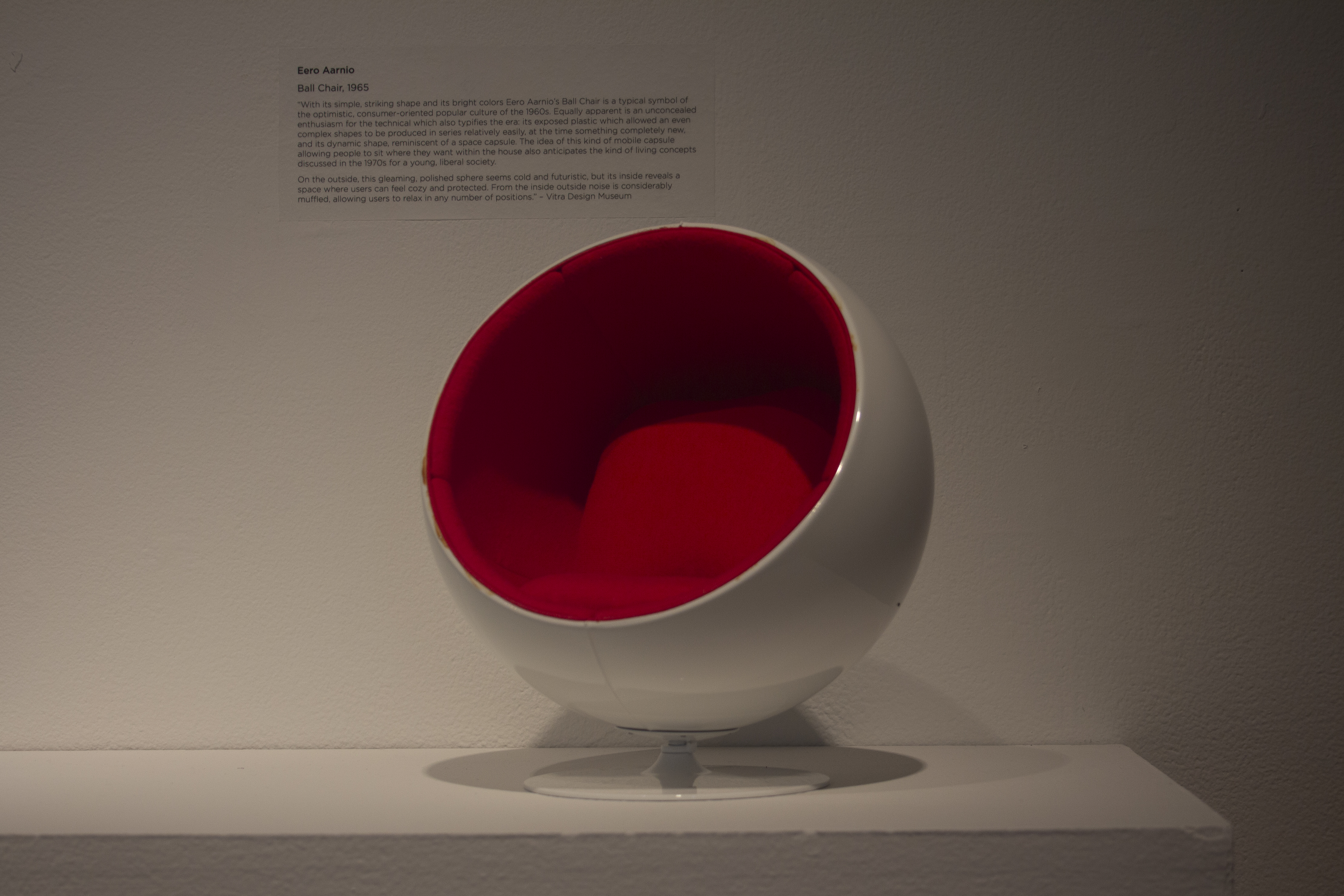
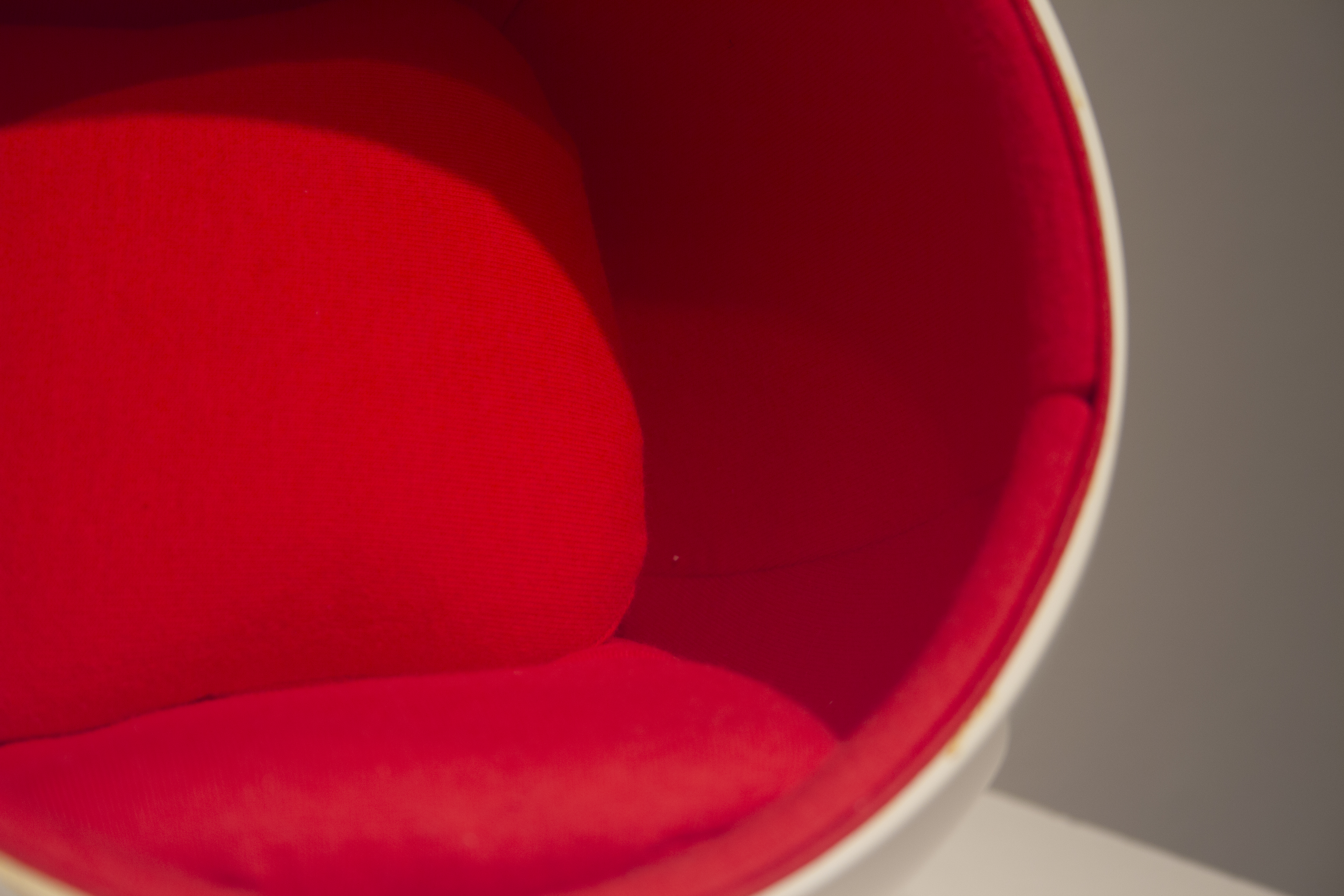
George Nelson
Coconut Chair, 1955
“Designer George Mulhauser first introduced the idea for the chair at the Nelson office. Former employees of Nelson remember the design as part of the portfolio with which Mulhauser, a graduate of New York's Pratt Institute, applied for a position in Nelson's office. After leaving his job with Nelson, Mulhauser went on to work for Plycraft, but little is known of his later career.
The Coconut Chair's seat shell integrates seat, backrest, and armrests into one element and is comprised of three layers. Until about 1963, the outer shell was made using bent sheet steel. Manufacturer Herman Miller predicted that the chairs were likely to be used as seating in company lobbies, where they would not be moved around, and thus their weight was presumably of little consequence at first.
The polishing disc used to mechanically polish the welded one-piece base frame posed the risk of getting caught in the frame and injuring the worker. The redesign was completed in collaboration with Don Albinson, a designer at the Eames Office. The solution was three single aluminum legs with rungs joined by rivets. The new construction was introduced in May 1963. In 1963 or 1964, the material used for the seat shells was changed from sheet steel to the considerably lighter glass fibre reinforced polyester. Between 1958 and 1968 Herman Miller advertised the Coconut Chair paired with a four-legged footstool, which Vitra reissued in 2006.” -Jochen Eisenbrand

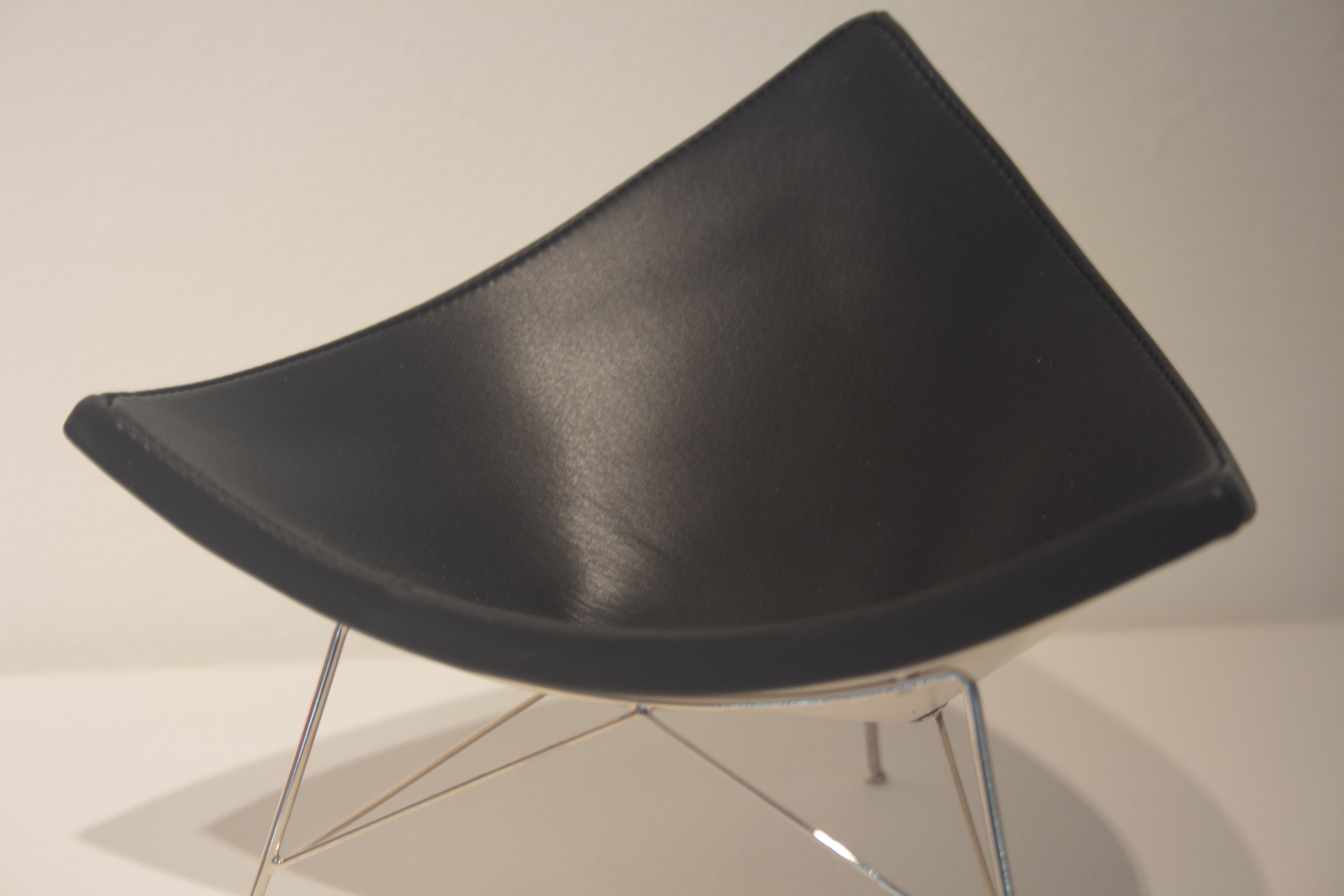
George Nelson
Marshmallow Sofa, 1956
“Anecdote has it that the flash of inspiration came to Nelson when he was approached by a salesman from a plastics manufacturer, who claimed that his company could punch out foam discs that, when heated, would automatically form a smooth vinyl surface. The Marshmallow Sofa's design incorporated the lavish number of eighteen individual, equal-sized, round discs, based on the assumption that they could be manufactured economically. The seat and backrest of the new love seat were each formed by two rows of five and four cushions. Being entirely mechanically manufactured, they would need only to be glued onto the plate supporting them. That, at least, was the theory.
Harper made a prototype of the sofa using the pieces from a game of Nine Men's Morris. Longer versions capable of seating three or even four people were also planned. The producer, however, ultimately proved unable to deliver them and the individual cushions had to be painstakingly hand-covered after all. Since such an iconic sofa design was too good to be filed away, Herman Miller still went ahead with its production, even though the higher costs translated into sluggish sales that consistently fell short of expectations. After nine years, the decision was made to drop it altogether. The Marshmallow Sofa nevertheless became a classic of furniture design, and thirty years later Vitro and Herman Miller began to reissue it.” -Jochen Eisenbrand
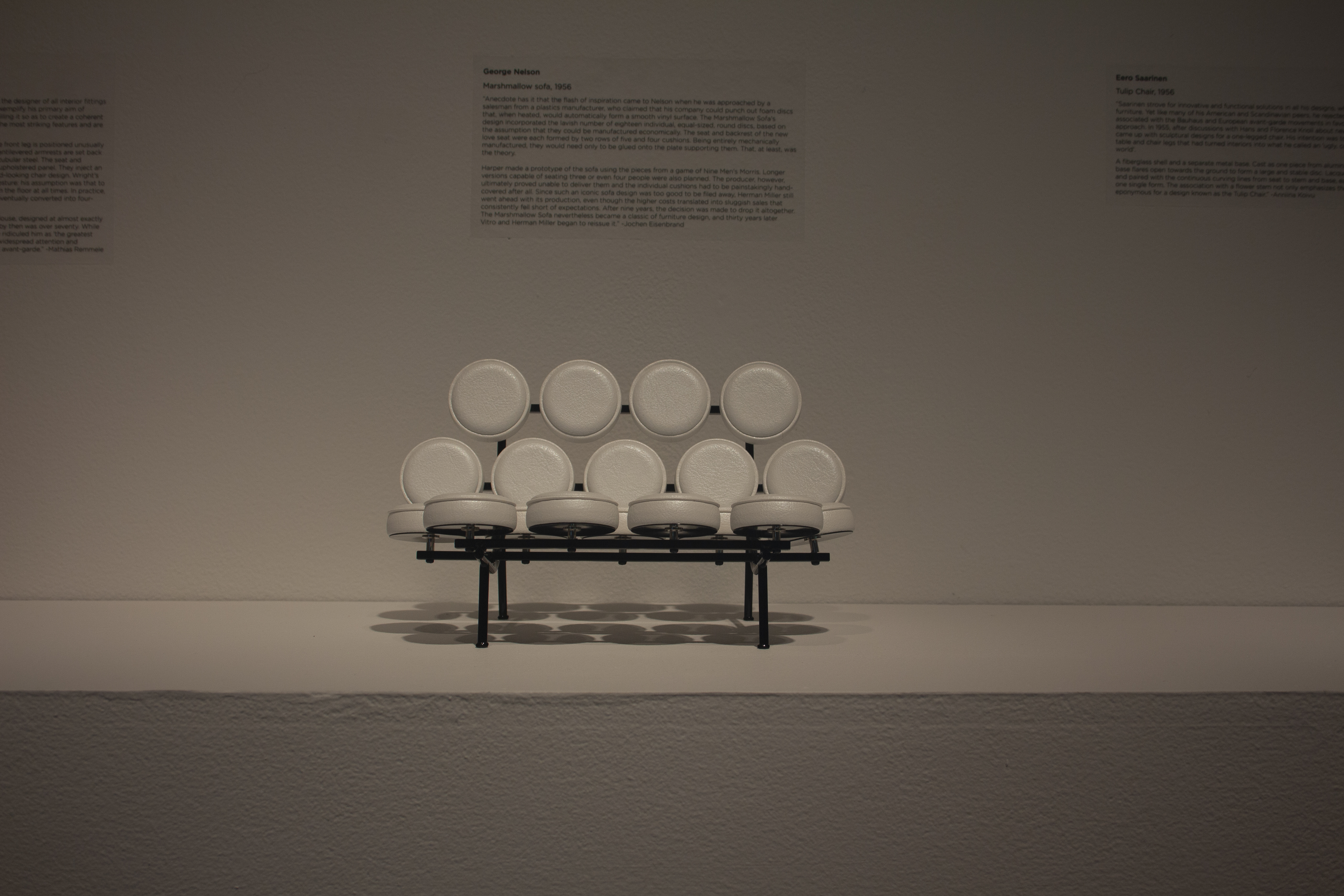
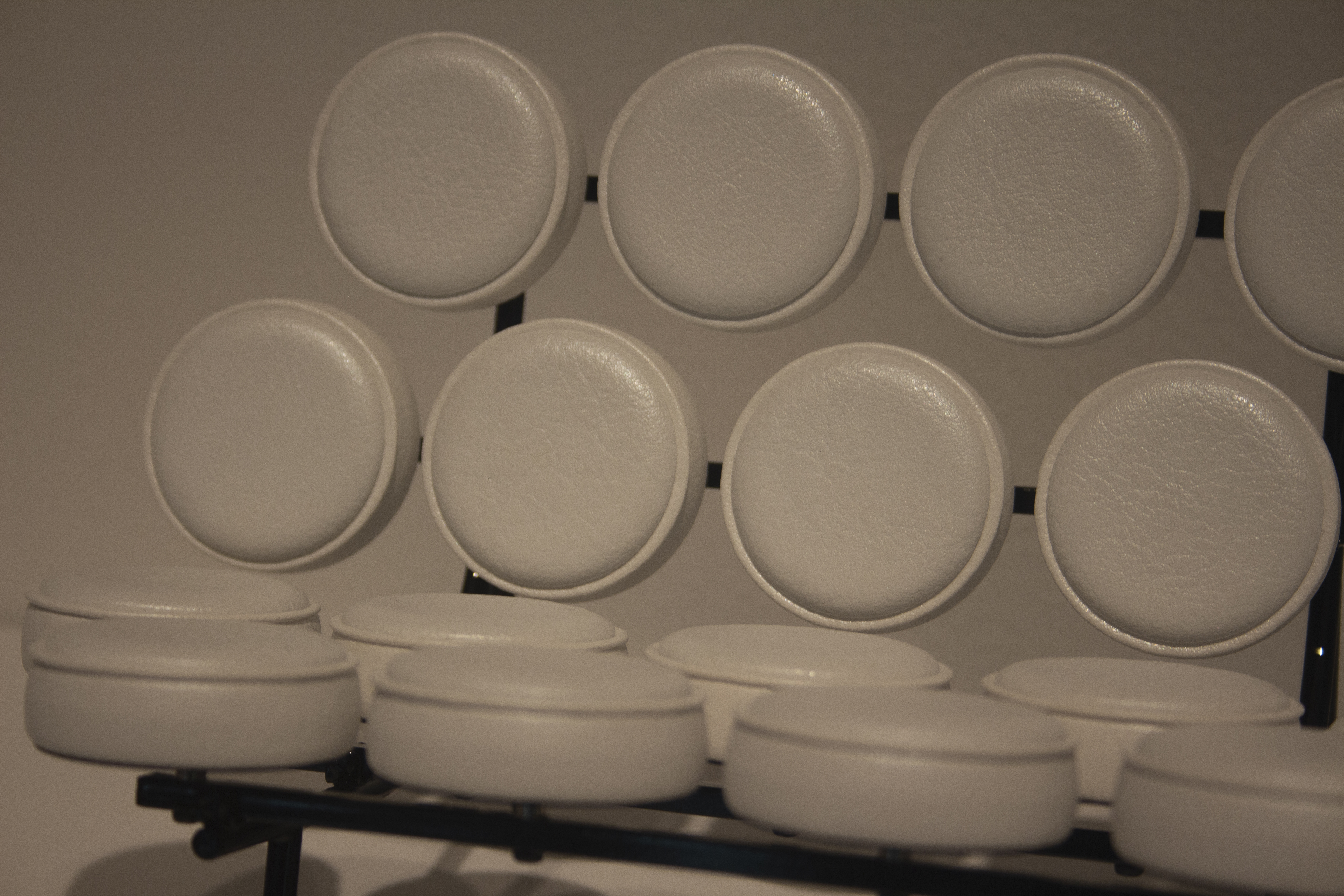
Verner Panton
Heart-Shaped Cone Chair, 1958
“The Heart Cone Chair is the most striking and hence the best-known object in Series K, with which Verner Panton first attracted international attention in 1959. Two variants of the model were produced, one whose backrest wings are closer together and another with the wings further apart.
The Heart Cone Chair is essentially a Pop Art-inspired reinterpretation of the wing chair. Not only is it stylish and surprisingly comfortable, but thanks to the high backrest, it is also very snug. Several such chairs grouped around a table create a room inside a room — an effect that Panton used extensively, for instance, when designing the interior of the Astoria hotel and restaurant in Trondheim, Norway, in 1960. Arne Jacobsen, in whose office Panton was employed from 1950 to 1952, achieved much the same effect around the same time with his Egg chair.” -Mathias Remmele
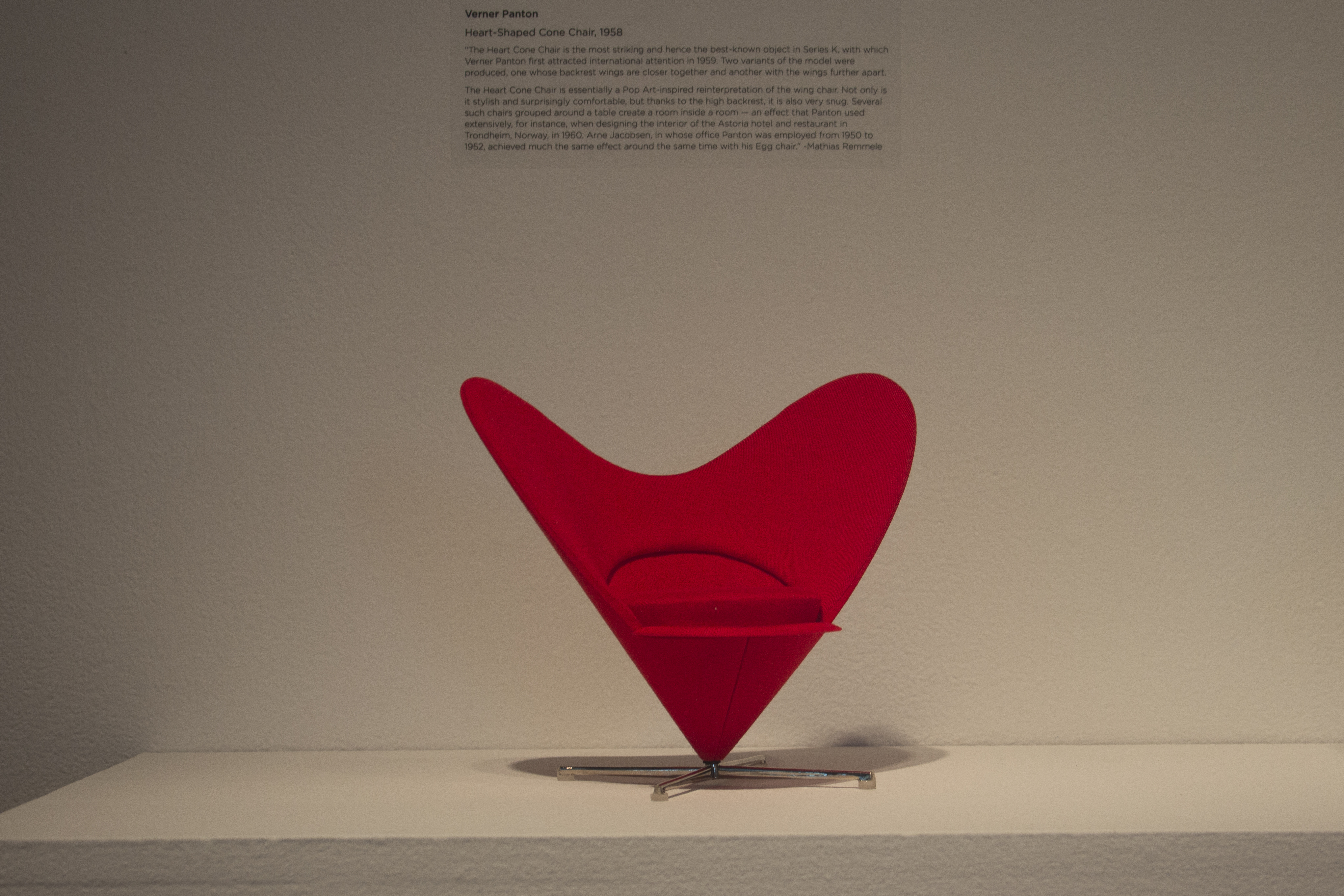
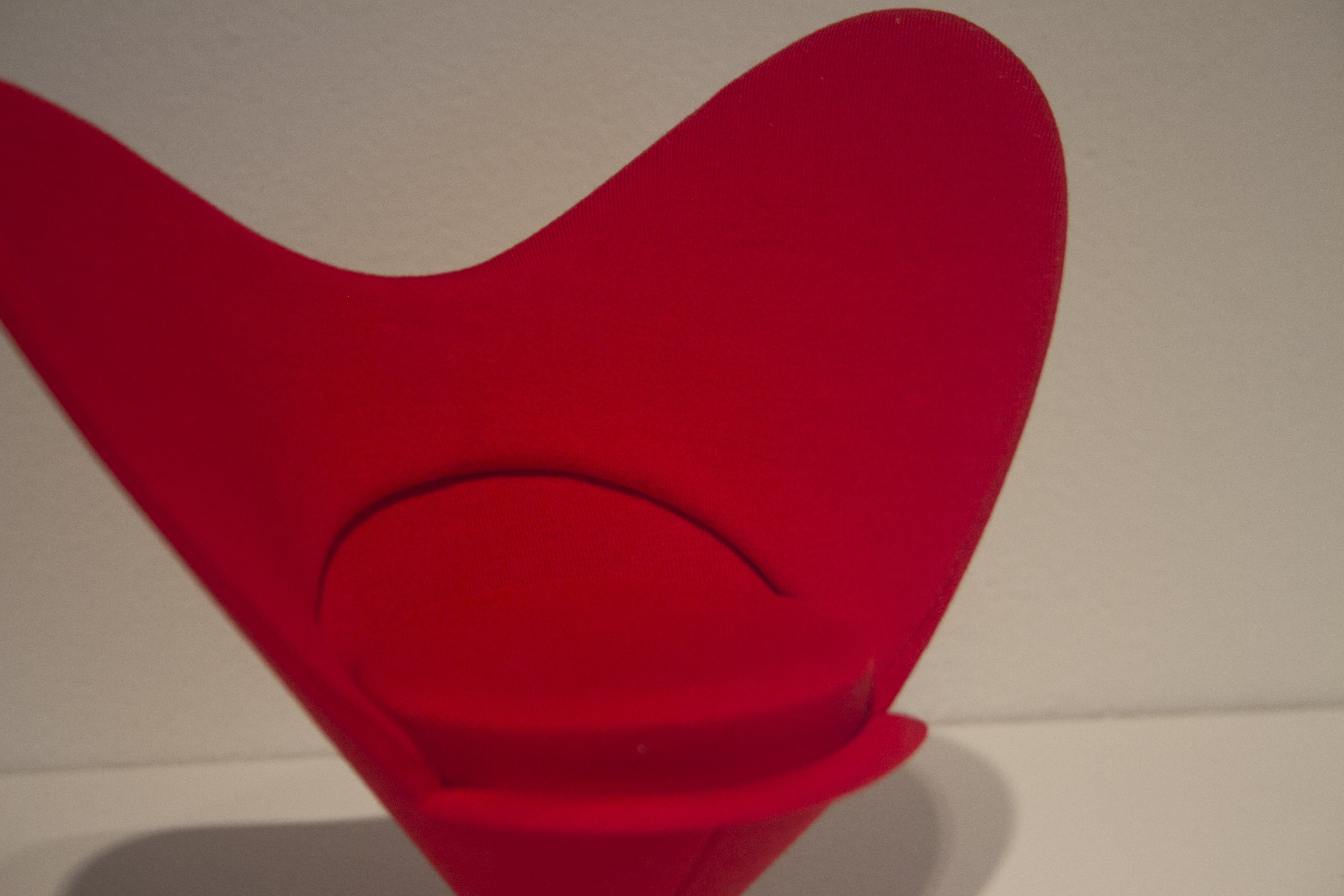
Pierre Paulin
Ribbon Chair, 1966
“Paulin's Ribbon Chair was inspired by a geometrical form known as the Möbius strip and represents the designer's efforts to obtain an ideal three-dimensional shape that is flexible and rich in possibilities. Supporting a variety of comfortable sitting positions, the ergonomic, curvilinear shape of the Ribbon Chair comes close to this ideal of formal flexibility. The sculptural lounge chair has a wooden base and a tubular steel frame, which is upholstered in polyester foam and covered by a stretch jersey fabric, designed and produced by textile designer Jack Lenor Larsen. Larsen, who had also studied furniture design, wanted to unite aesthetics of architecture and the techniques of weaving in this piece. The chair was available not only in bright monochrome colours but also patterned with zebra stripes or psychedelic designs. Indeed, the strong visual effect of the fabric played a role in the huge success of the Ribbon Chair, which received the International Design Award of the American Institute of Interior Design in Chicago in 1969.” -Valérie Guillaume
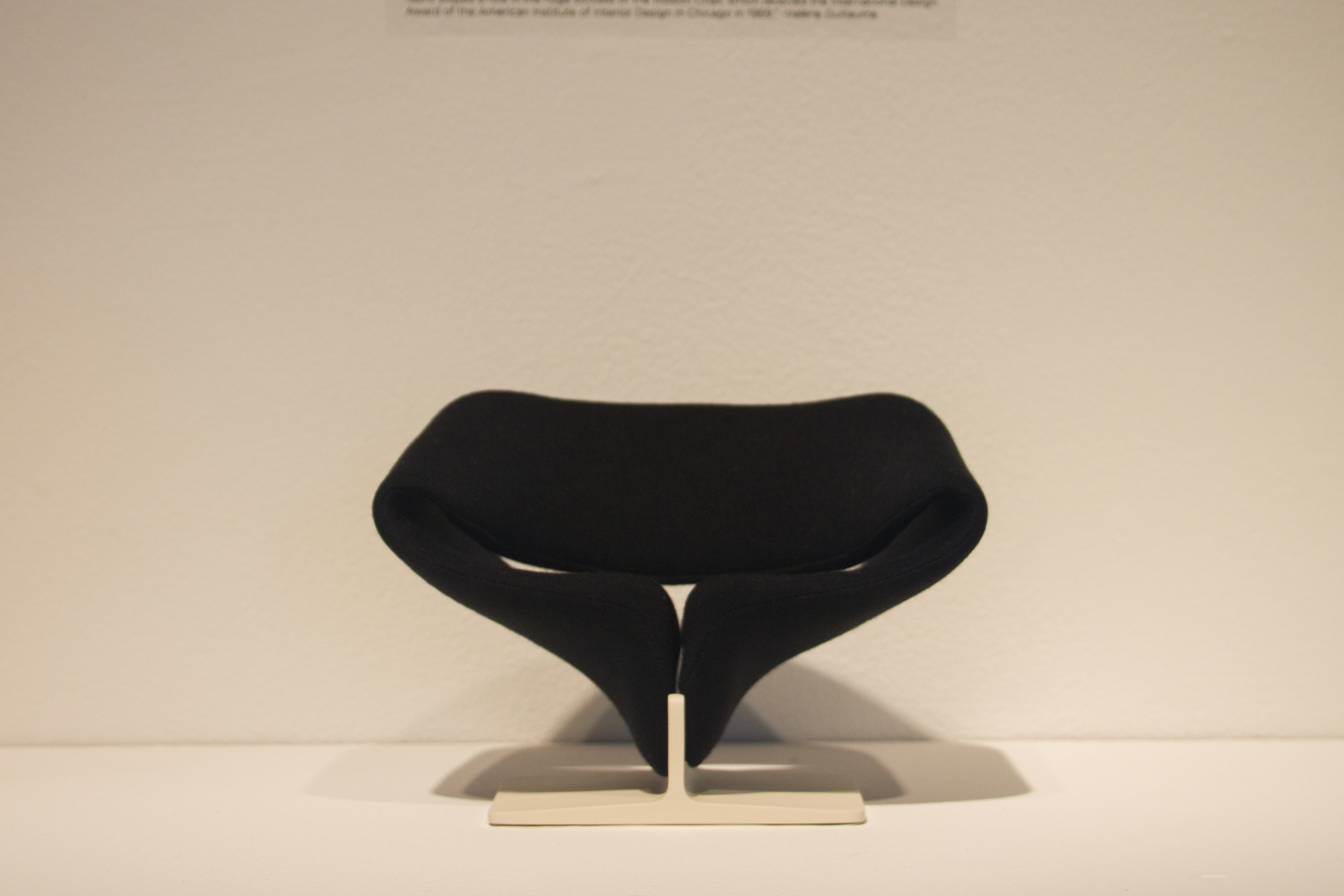
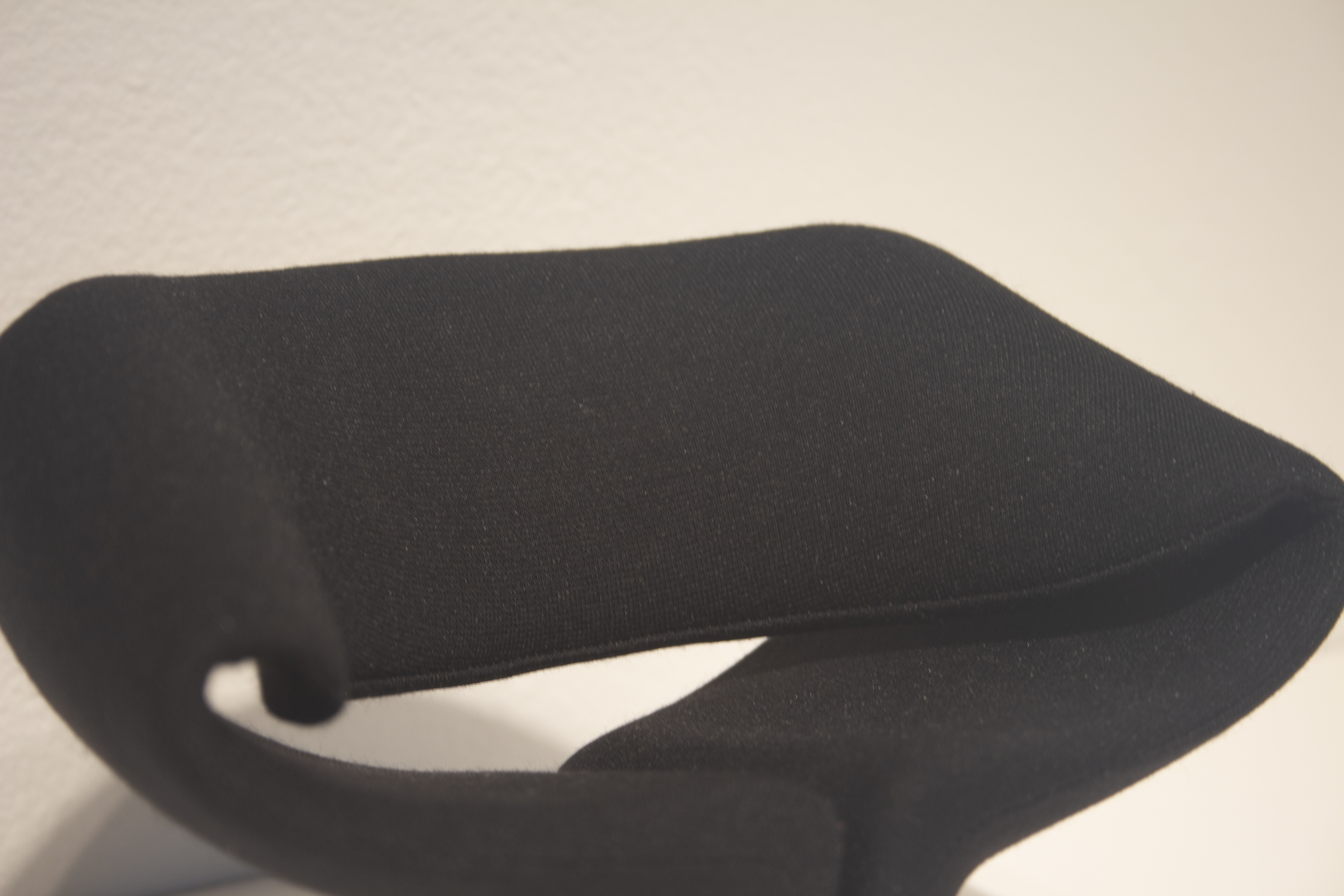
Frank Lloyd Wright
Johnson Wax Chair, 1939
“As with many of his buildings, Wright was both the architect and the designer of all interior fittings and furnishings as well. The desks and office chairs he designed exemplify his primary aim of achieving harmony between each interior space and the objects filling it so as to create a coherent whole. Both models display the horizontal layering that is one of the most striking features and are designed using the same circular, semicircular, or rounded.
In formal terms, the chair is probably without precedent. While the front leg is positioned unusually far forward, the two back legs that hold the tilting backrest and cantilevered armrests are set back from the seat and connected to it only by semicircular lengths of tubular steel. The seat and backrest both have a lenticular tubular steel frame supporting an upholstered panel. They inject an emphatically playful element into a dynamic and somewhat staged-looking chair design. Wright's three-legged chair was an attempt to promote a healthy sitting posture: his assumption was that to stabilize the chair, the sitter would have to keep both feet firmly on the floor at all times. In practice, however, the chairs tipped over so often that most of them were eventually converted into four-legged chairs.
The Johnson Wax Administration Building and the Falling Water House, designed at almost exactly the same time, marked an astonishing comeback for Wright, who by then was over seventy. While Philip Johnson, one of Modernism's great champions, had recently ridiculed him as 'the greatest architect of the nineteenth century', these late projects attracted widespread attention and catapulted him once again to the cutting edge of the international avant-garde.” -Mathias Remmele
